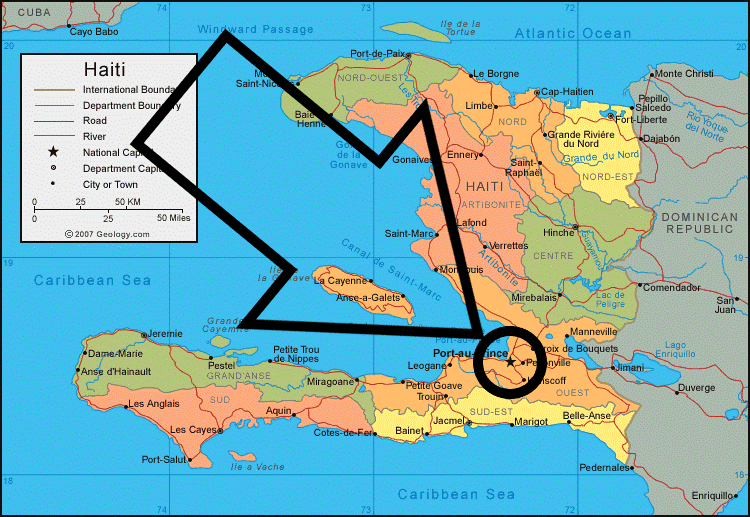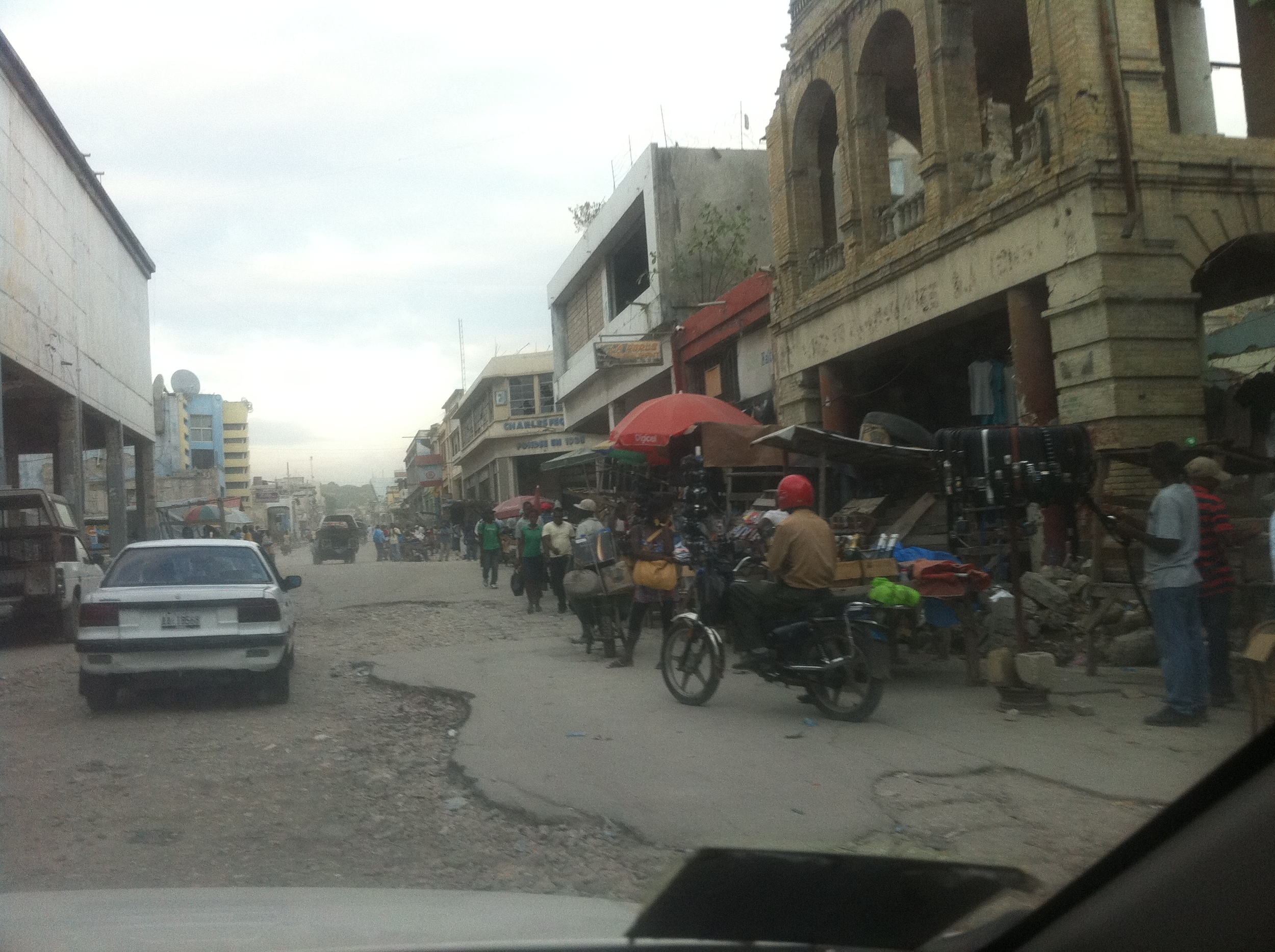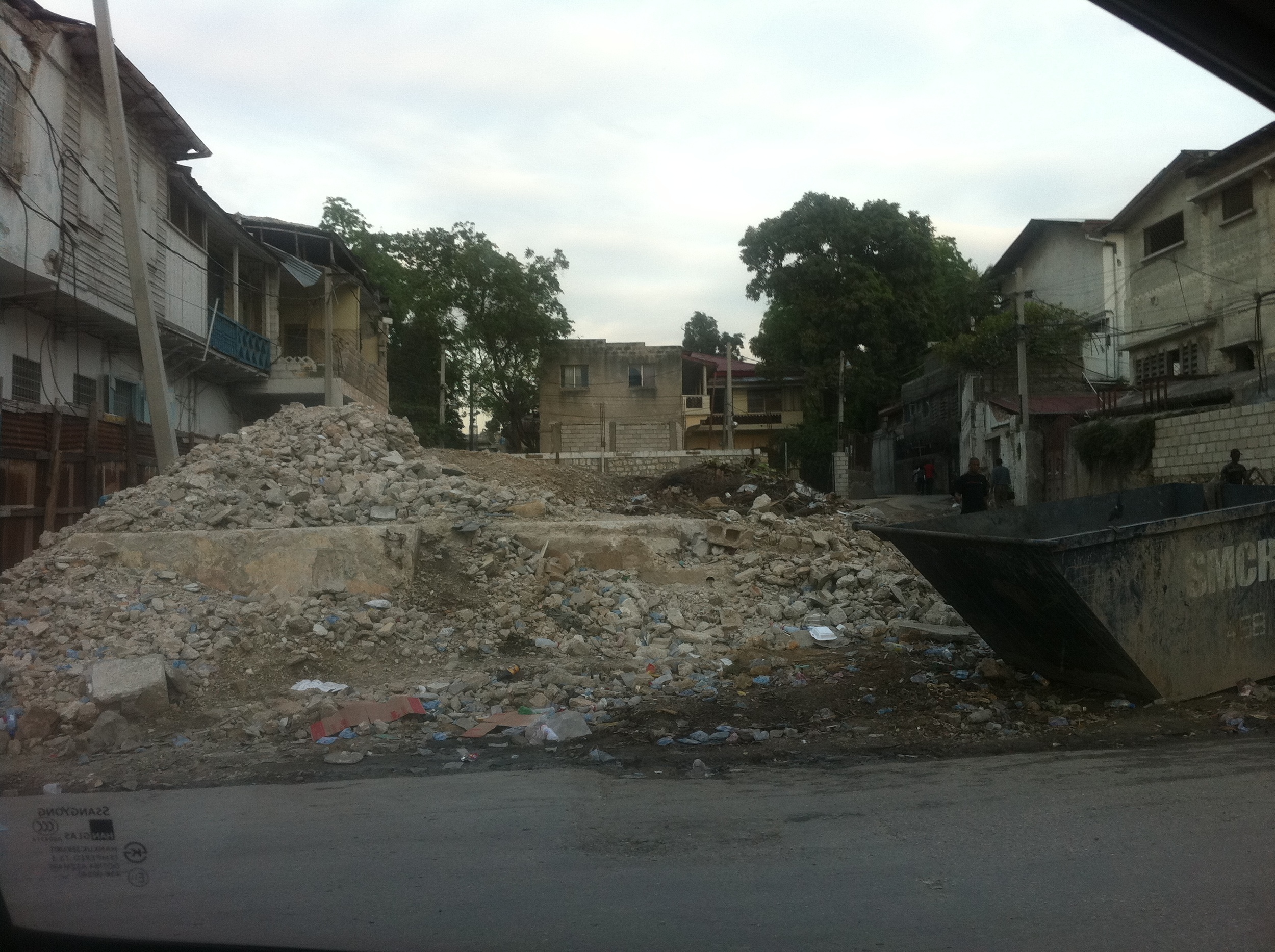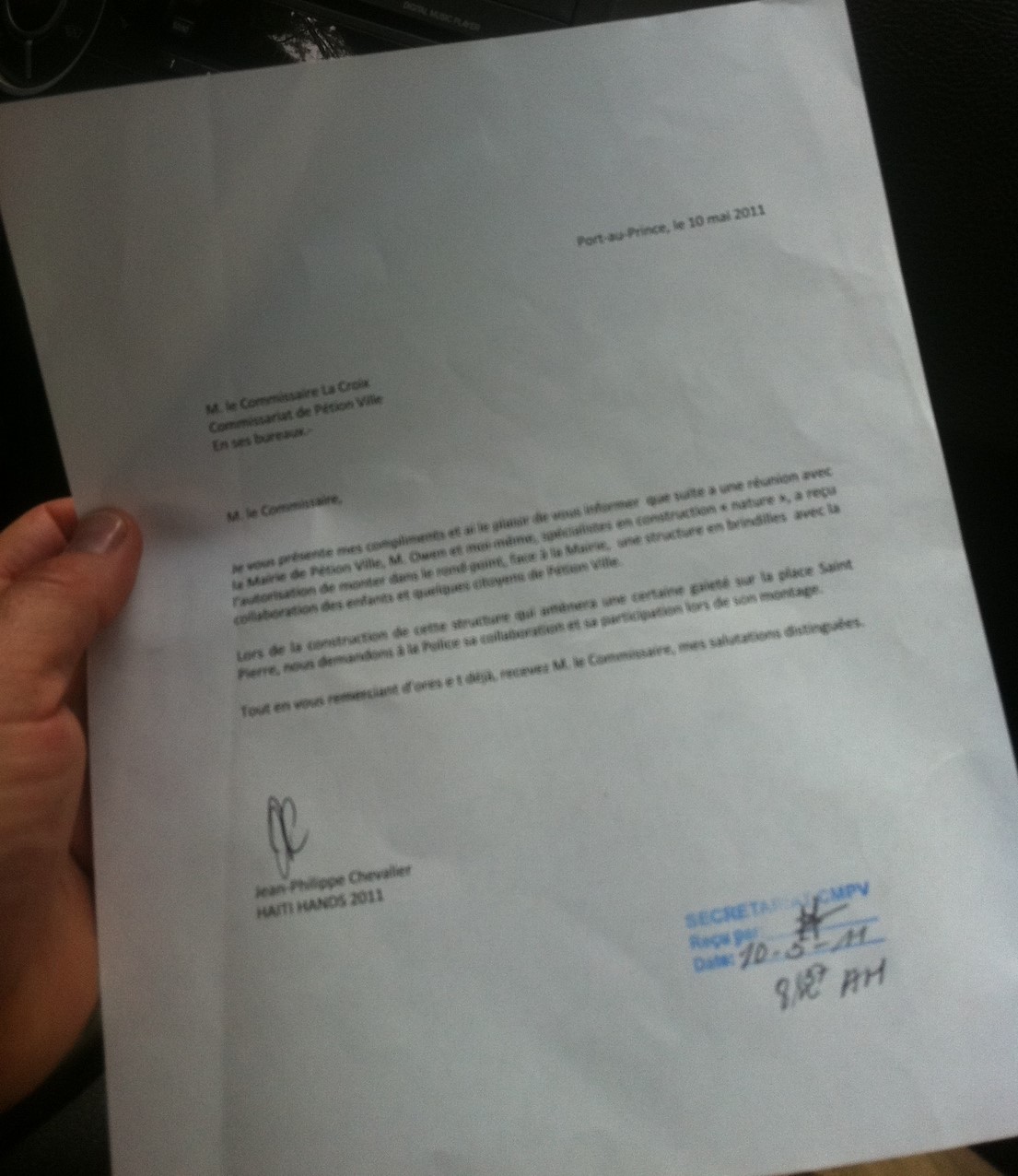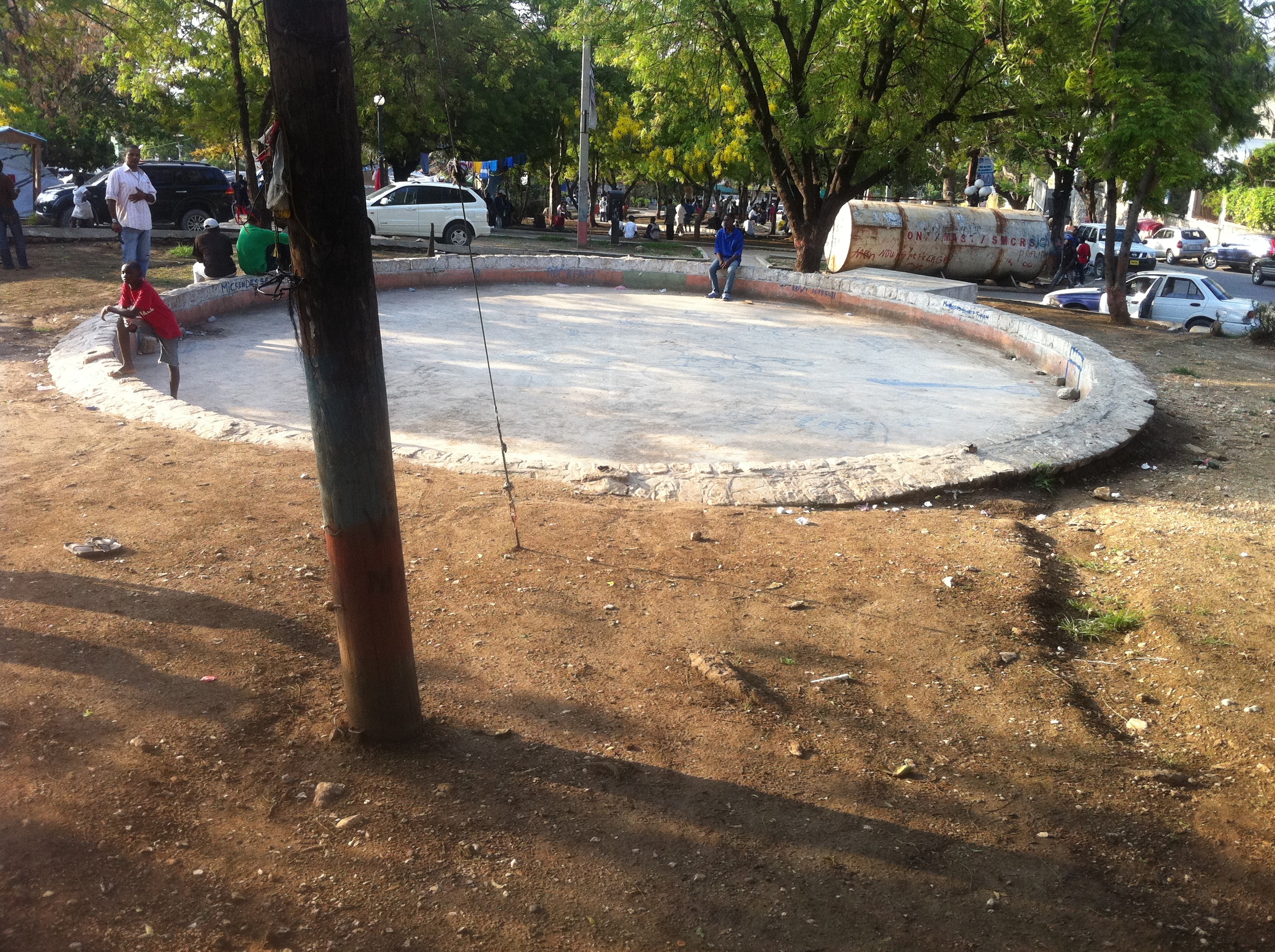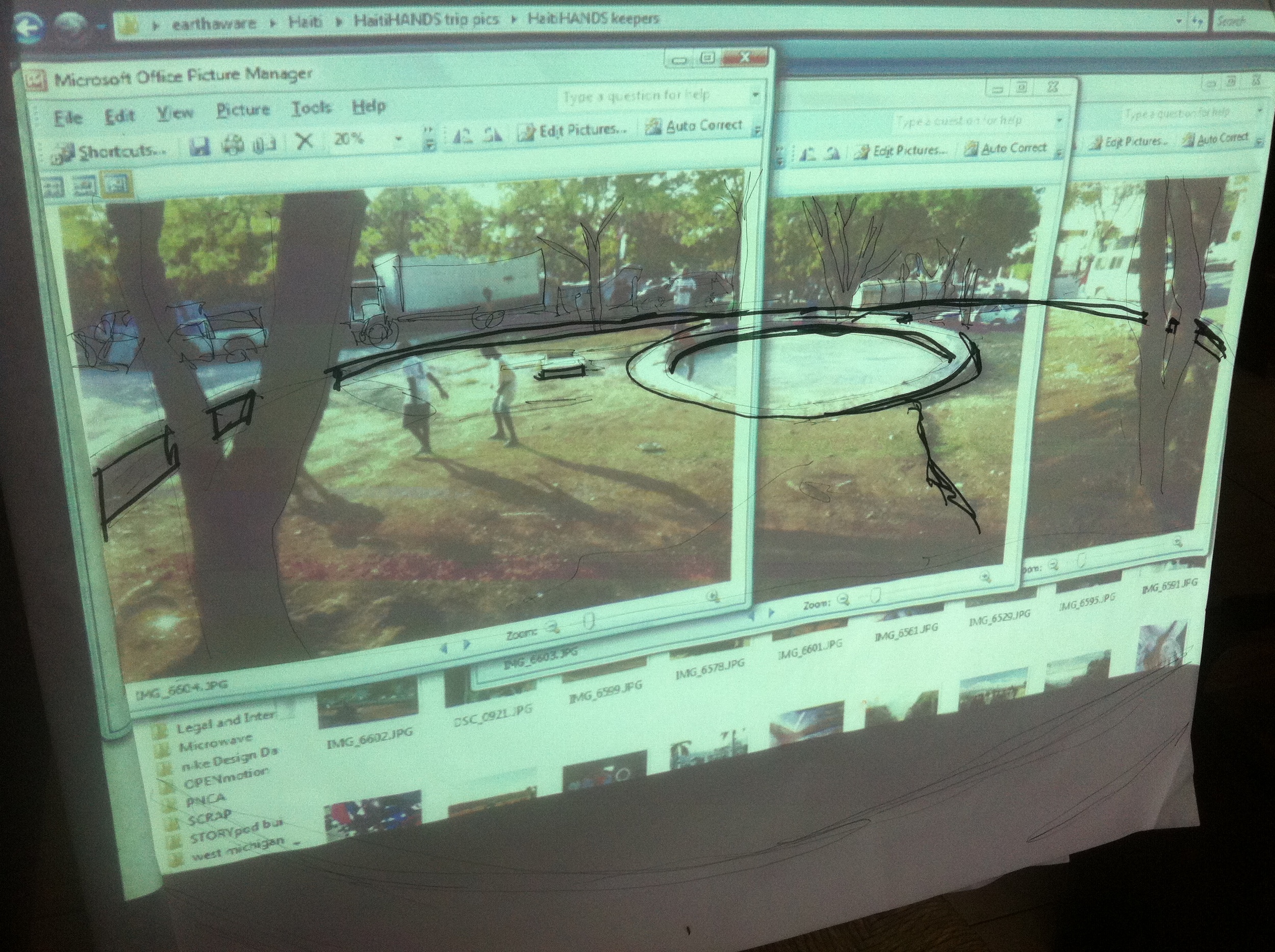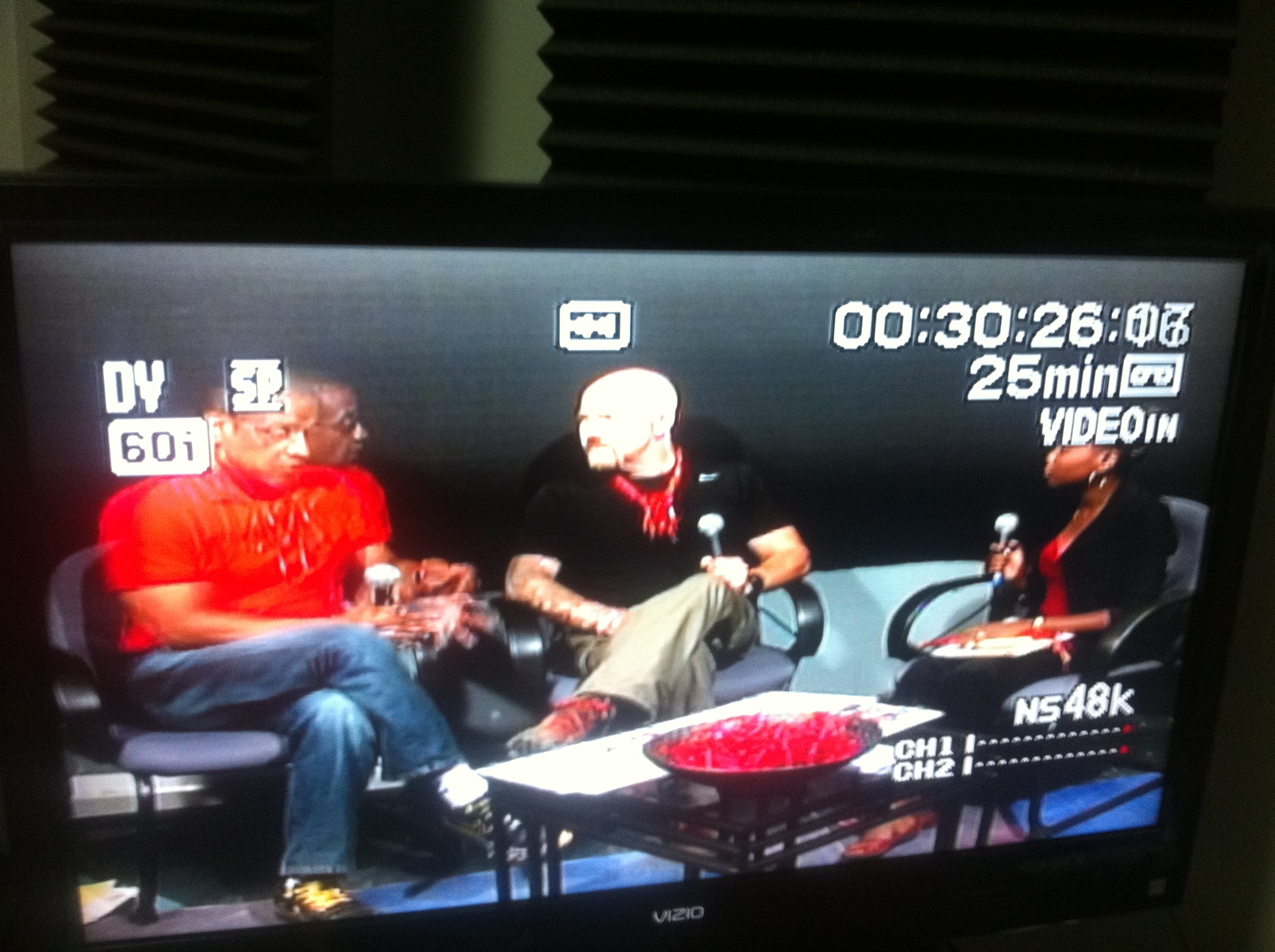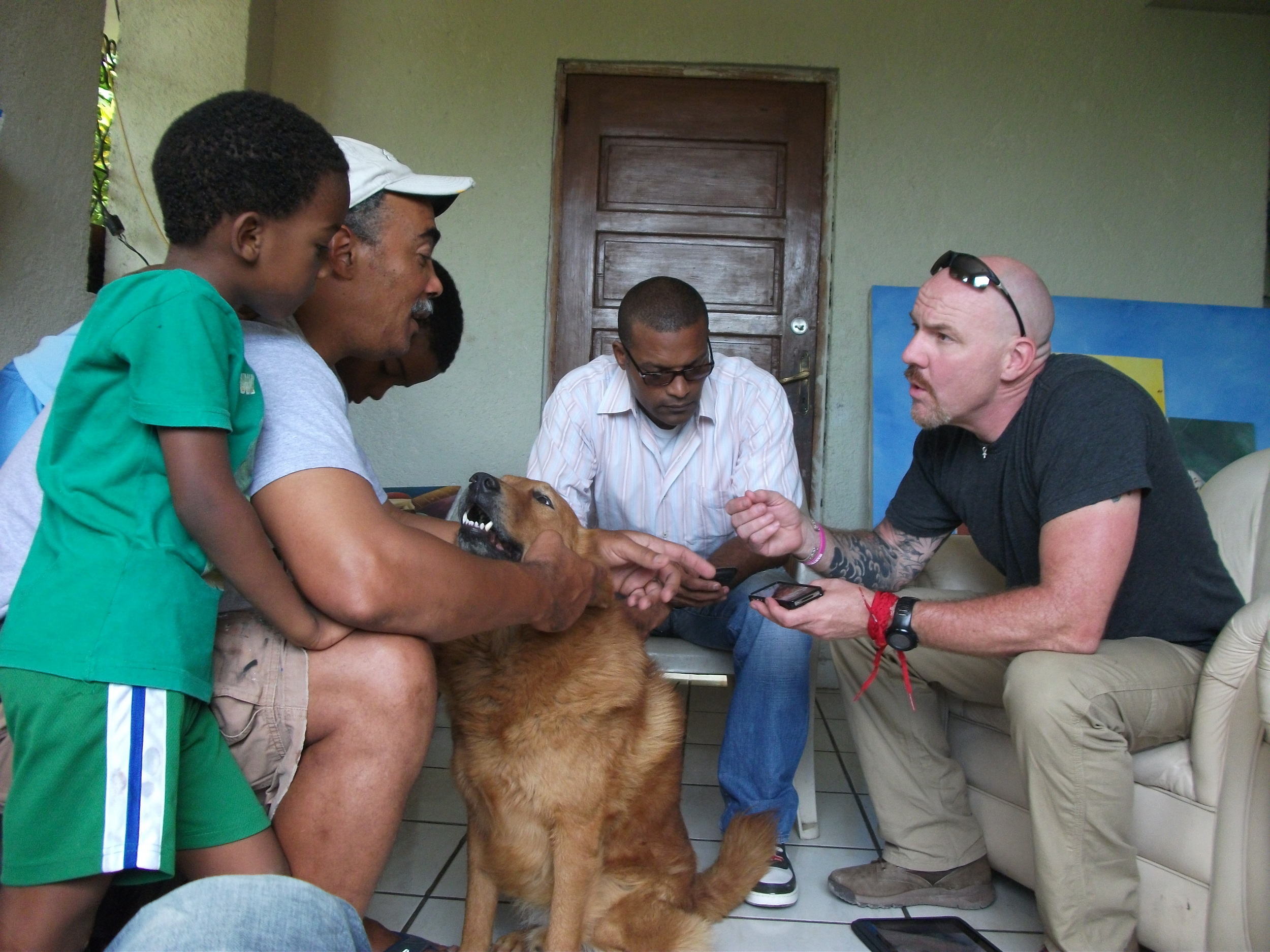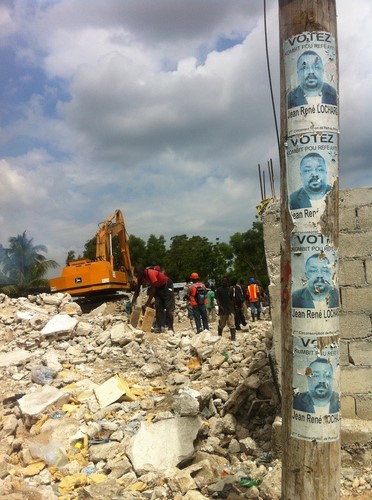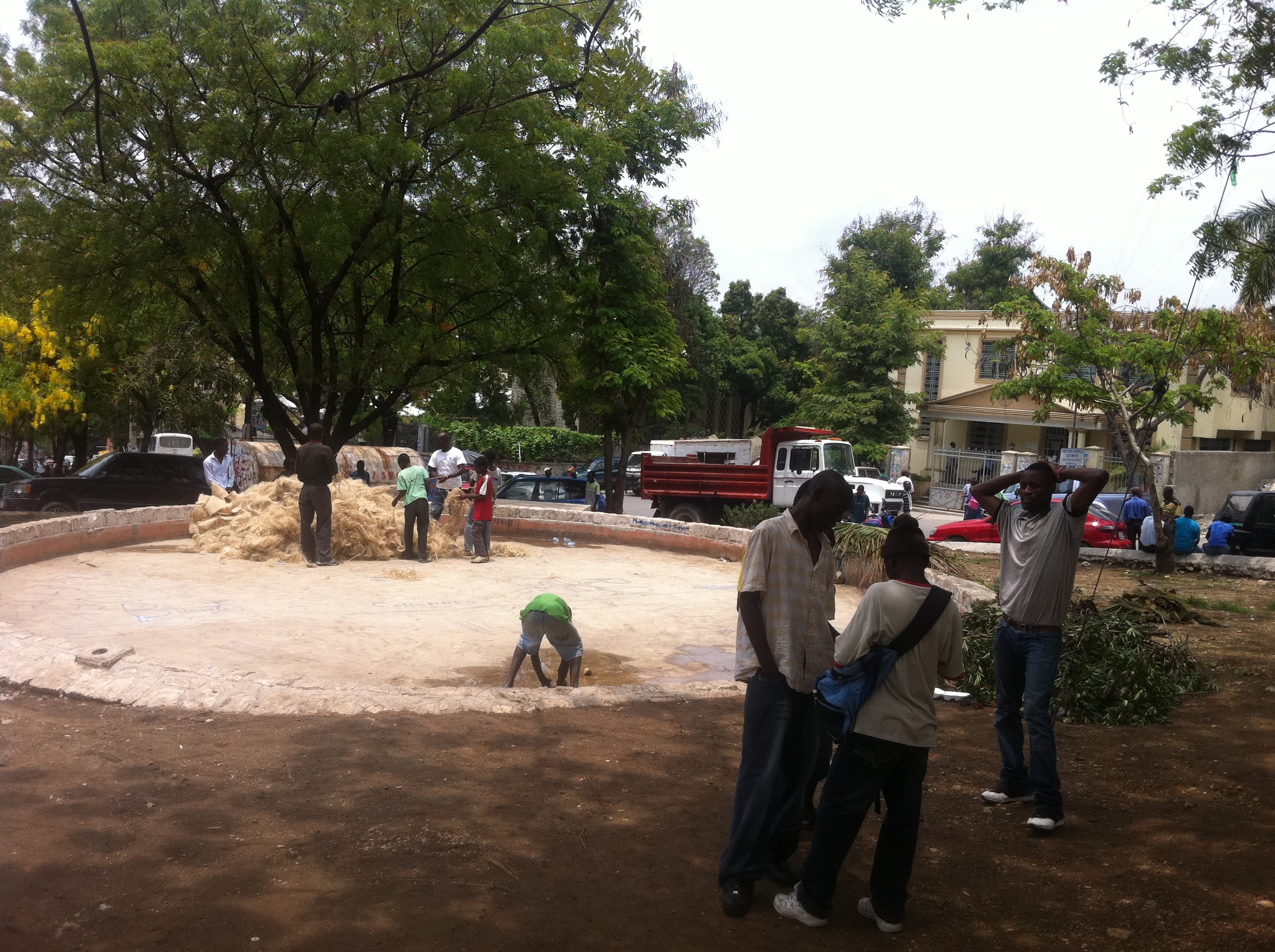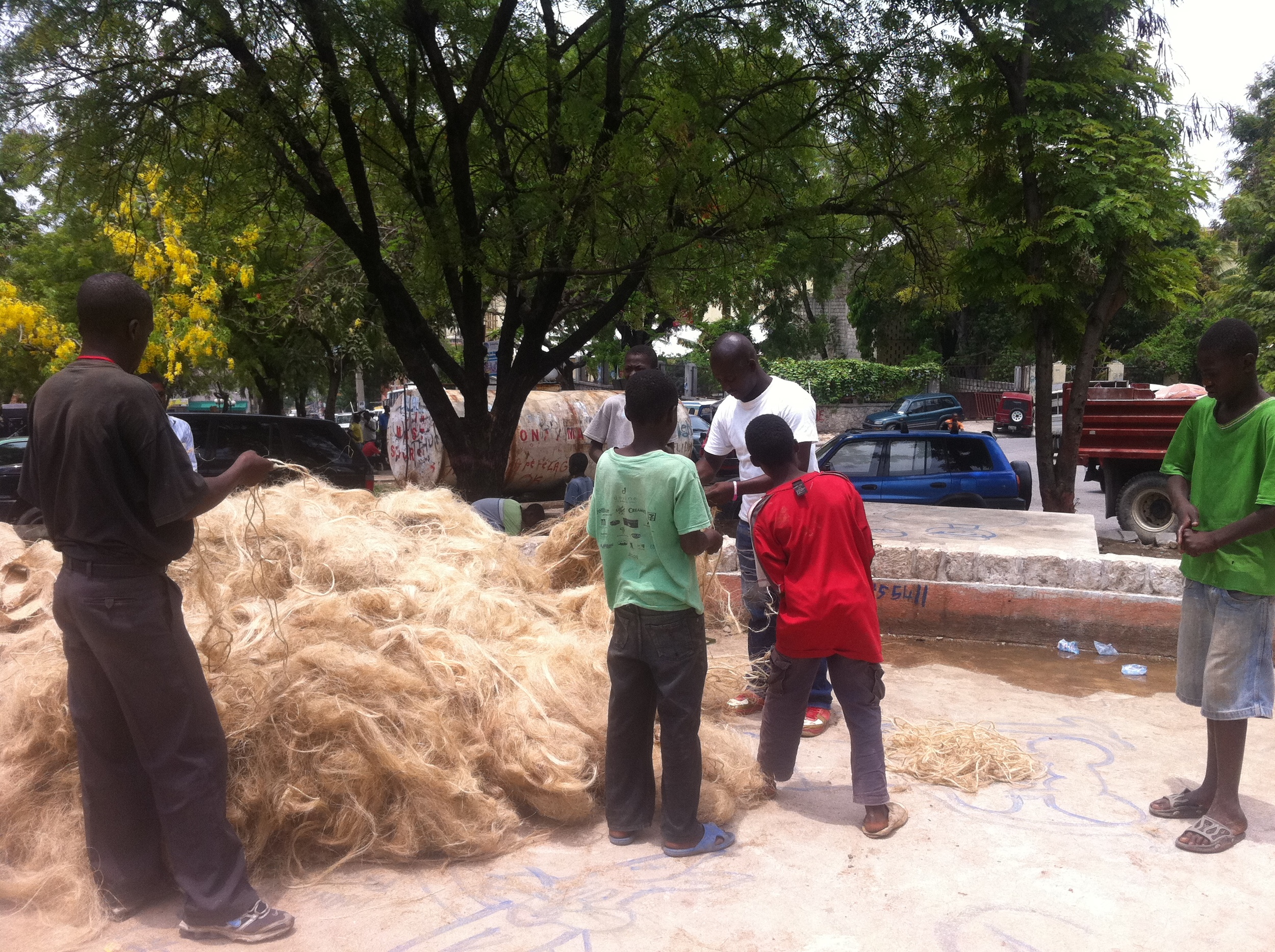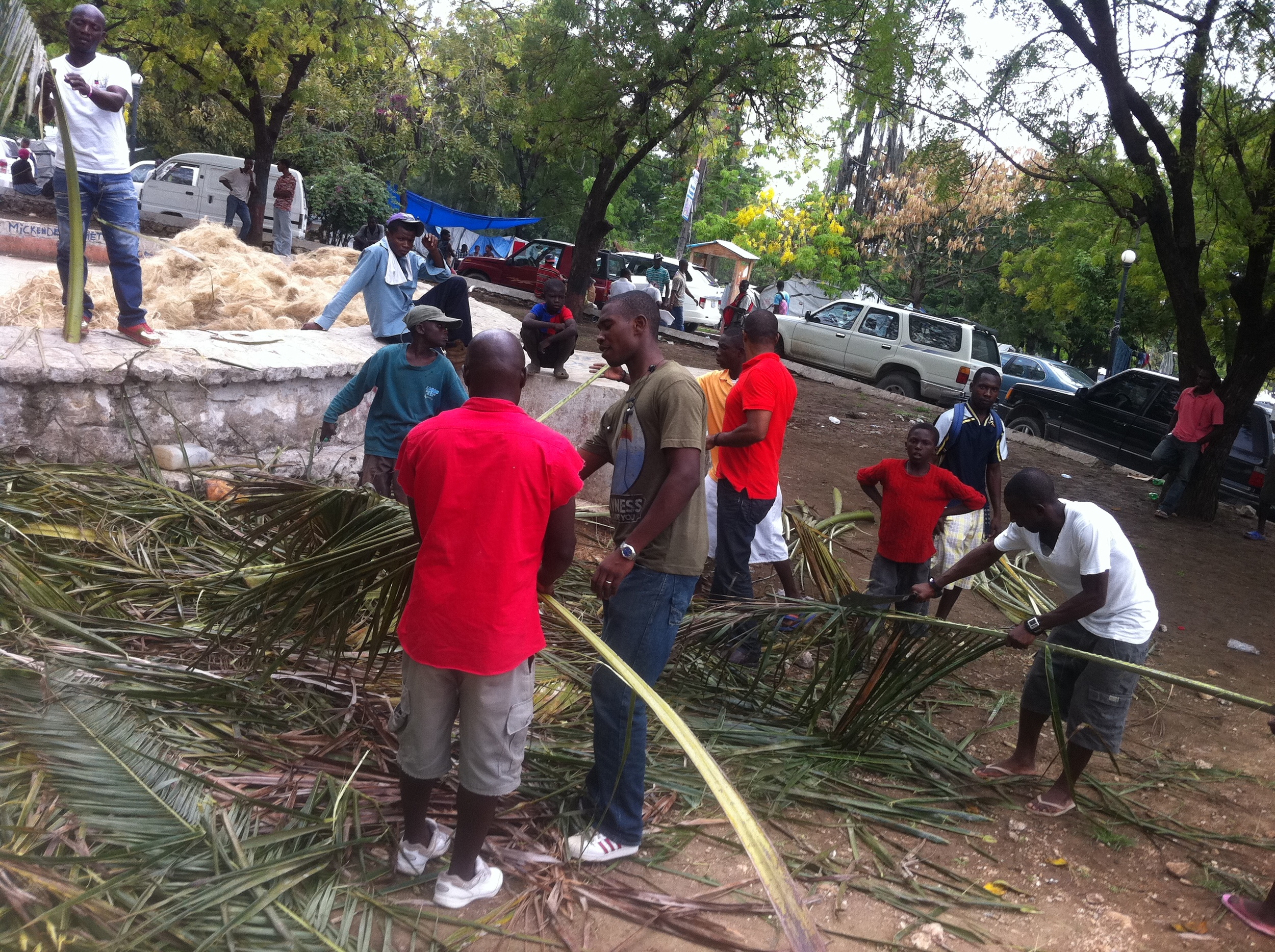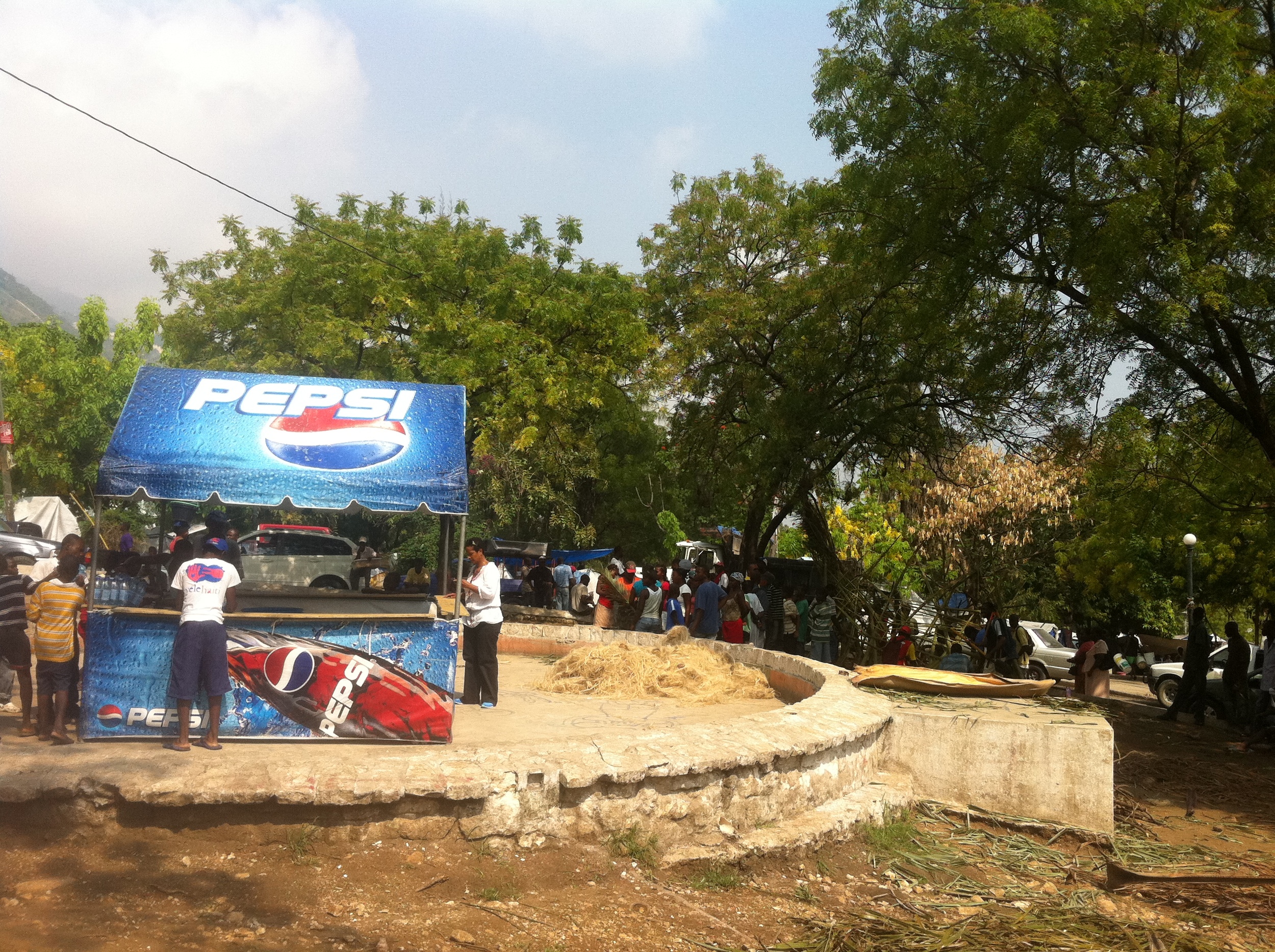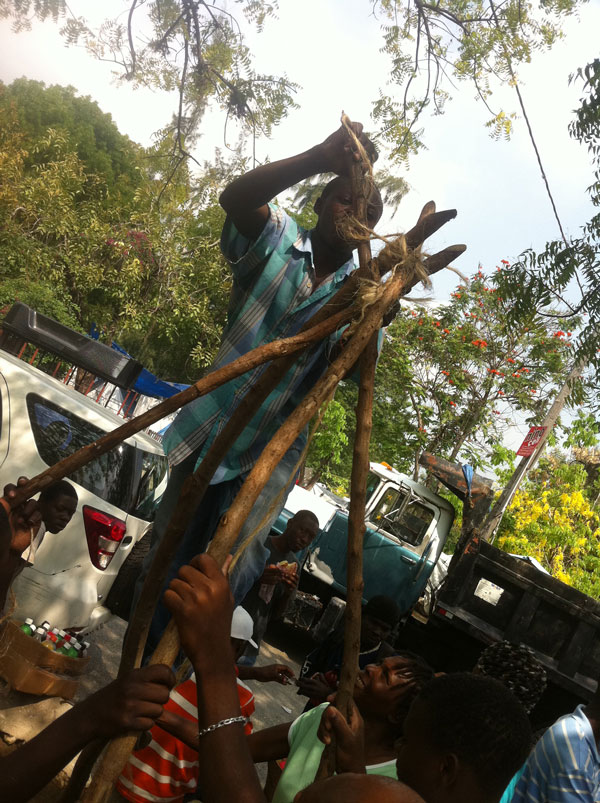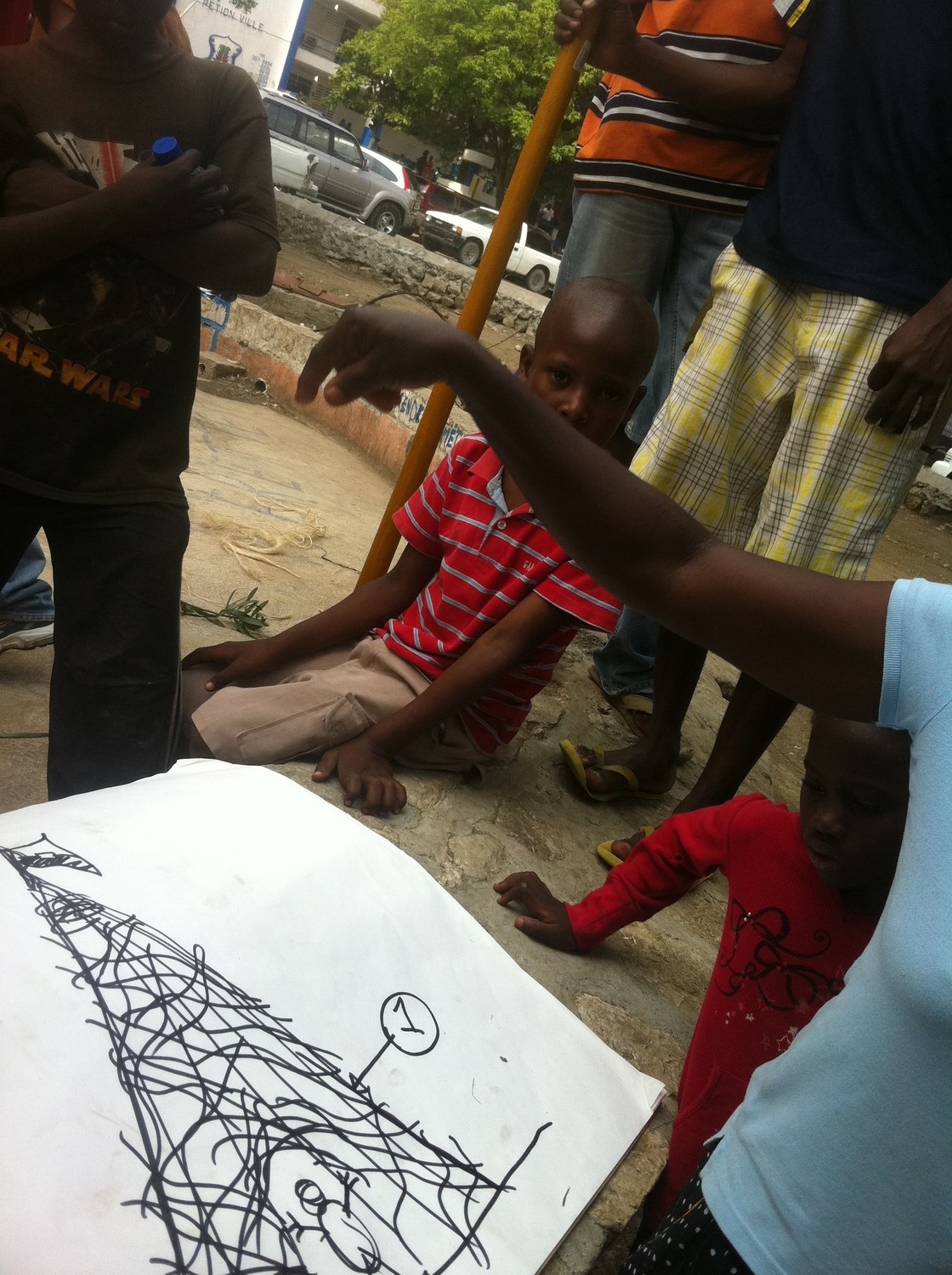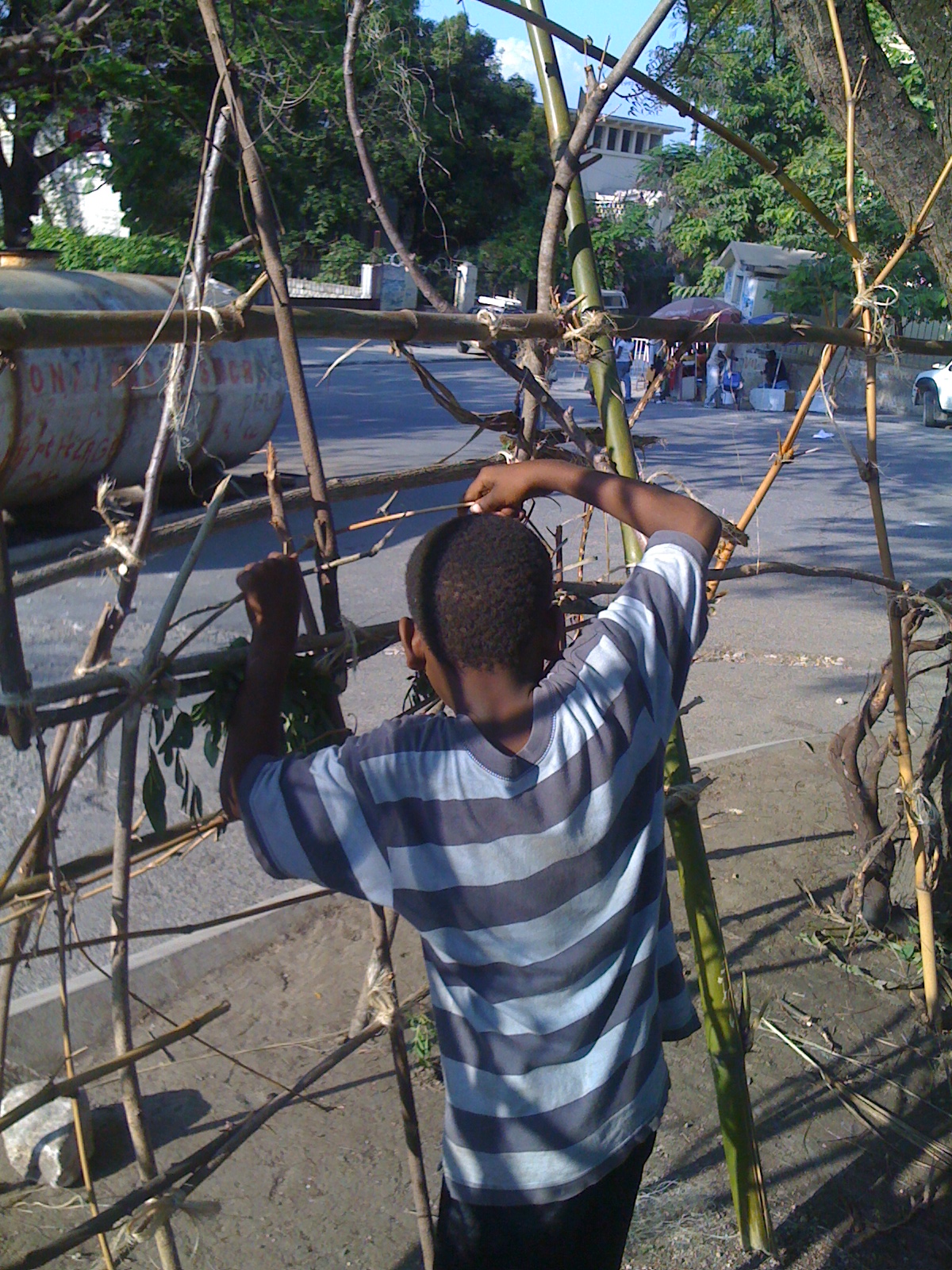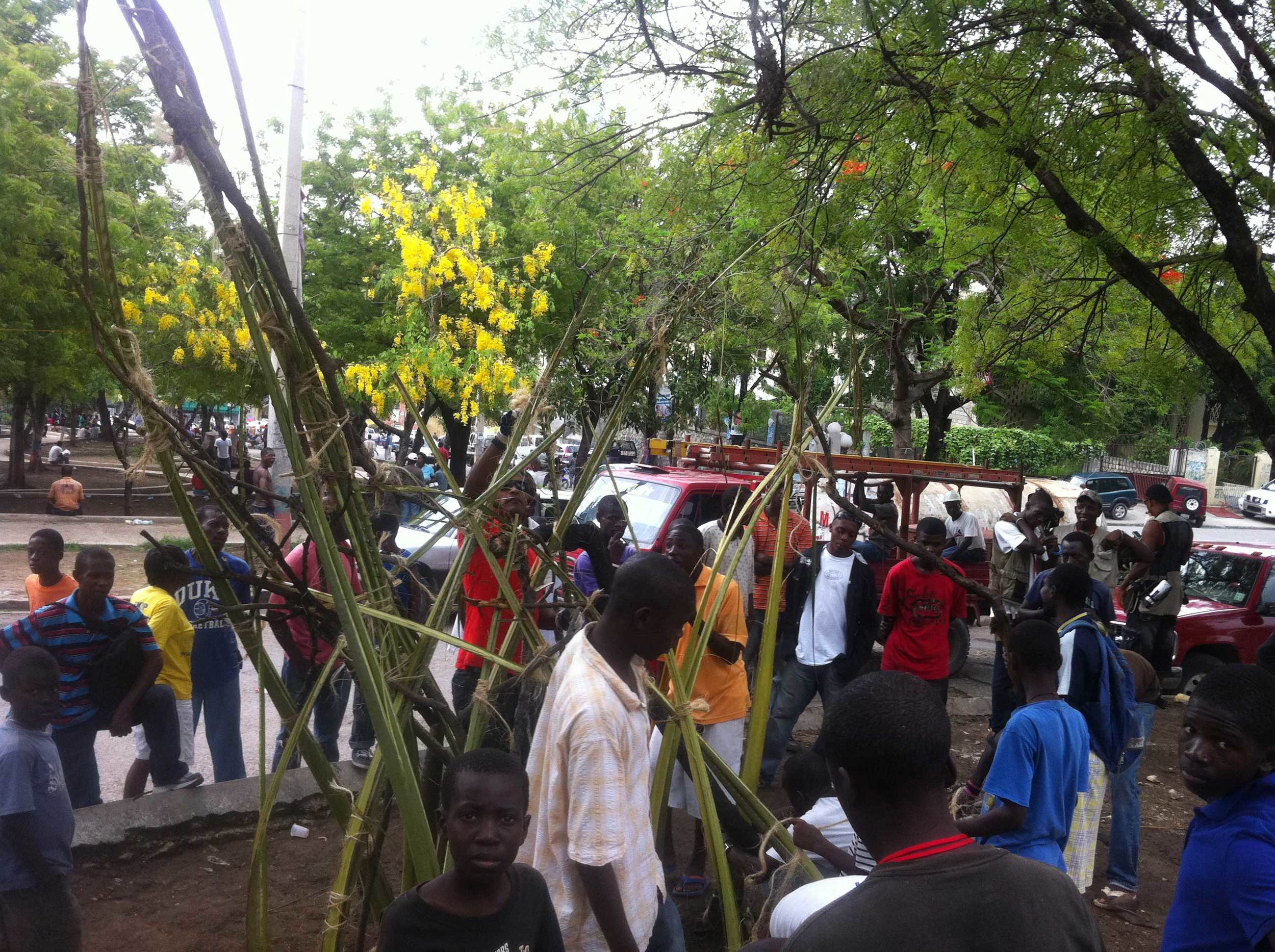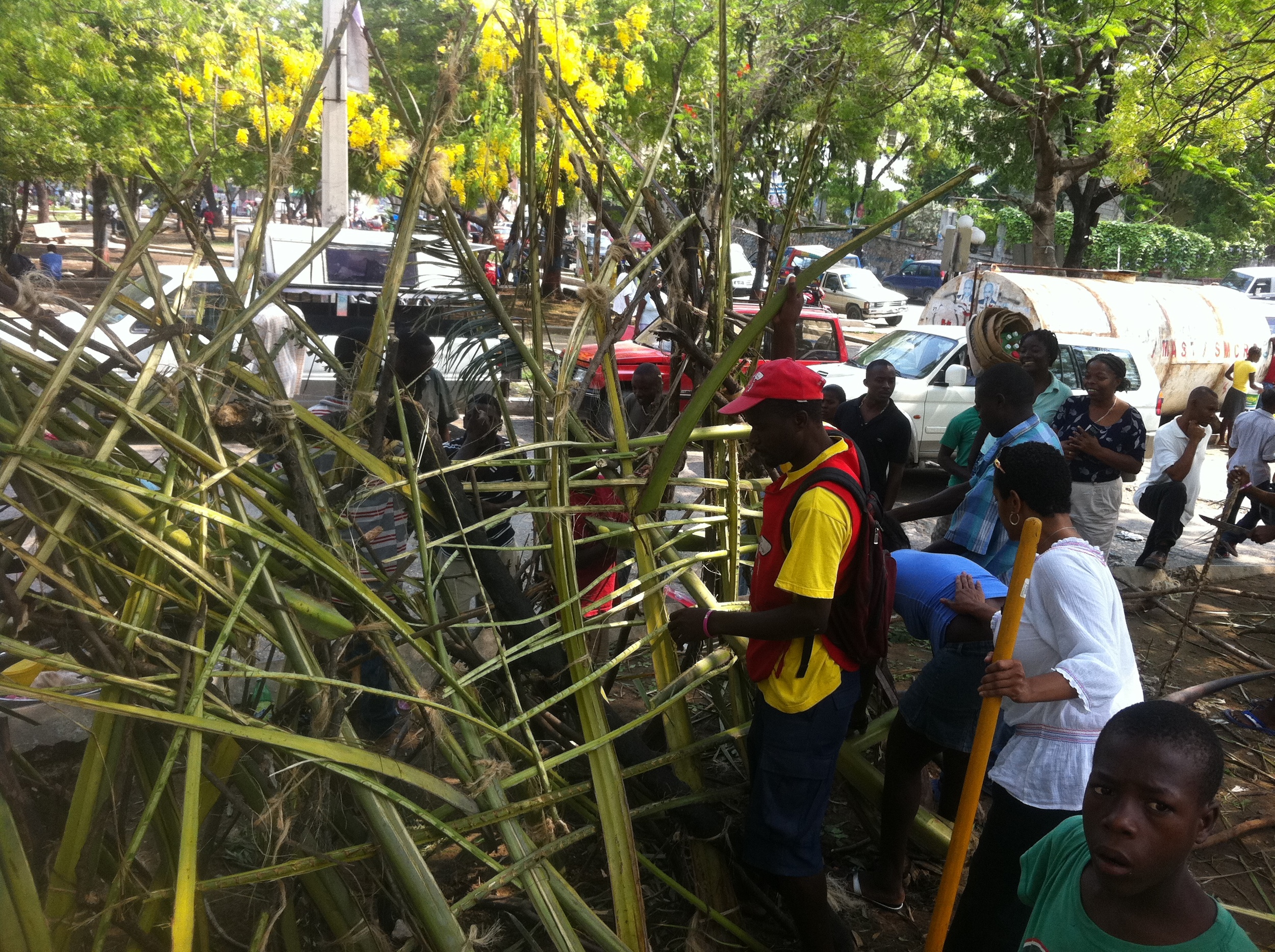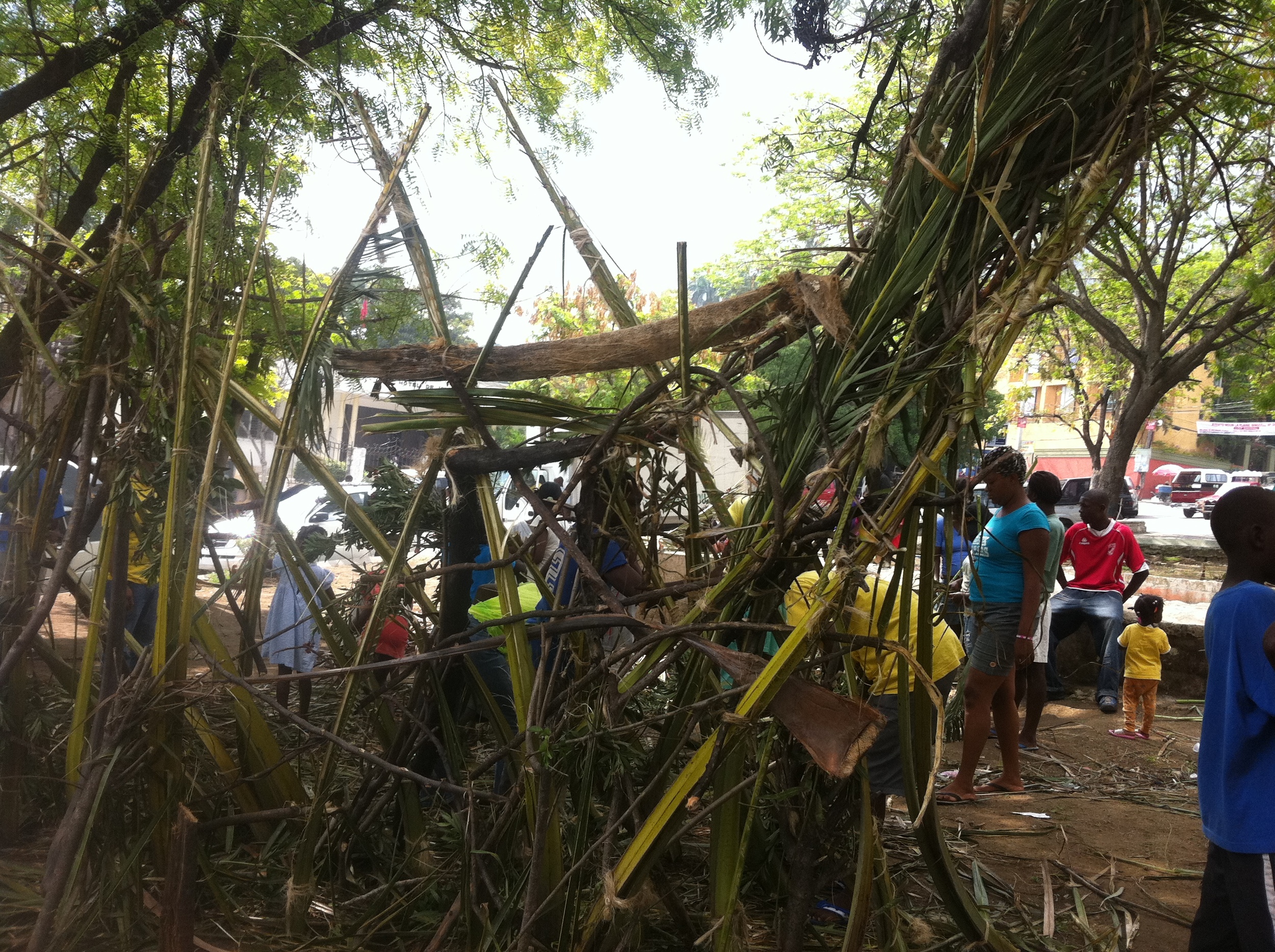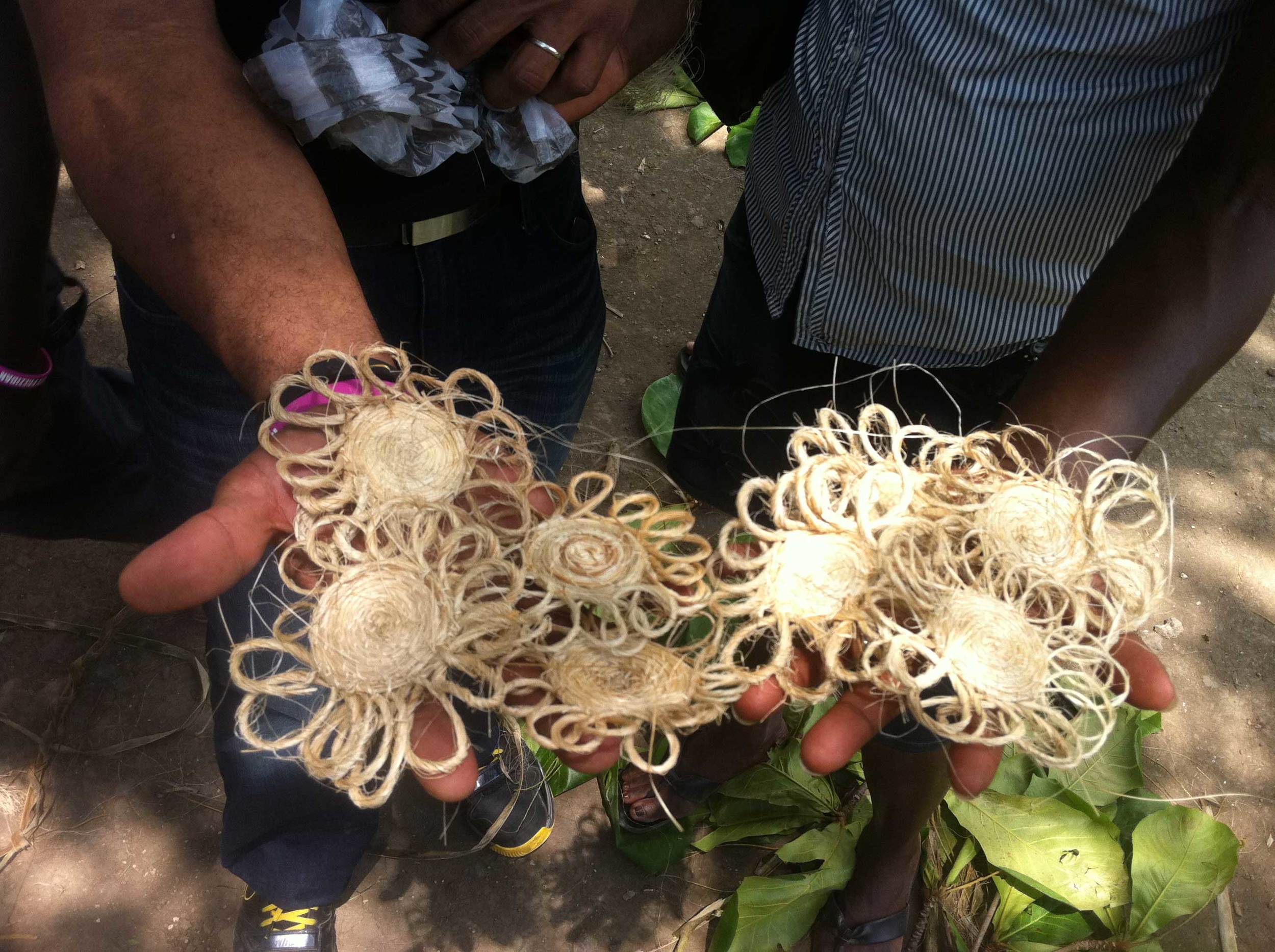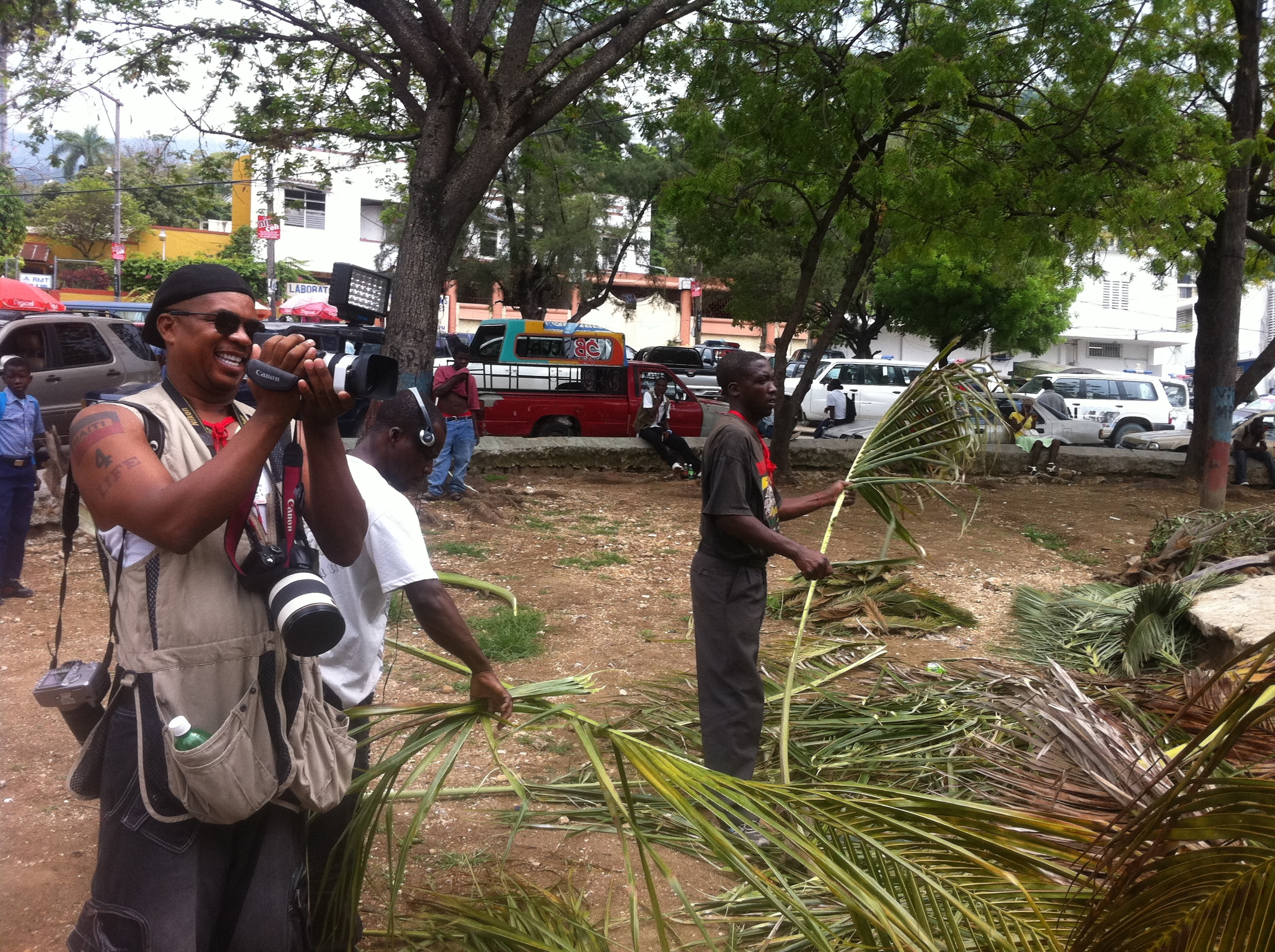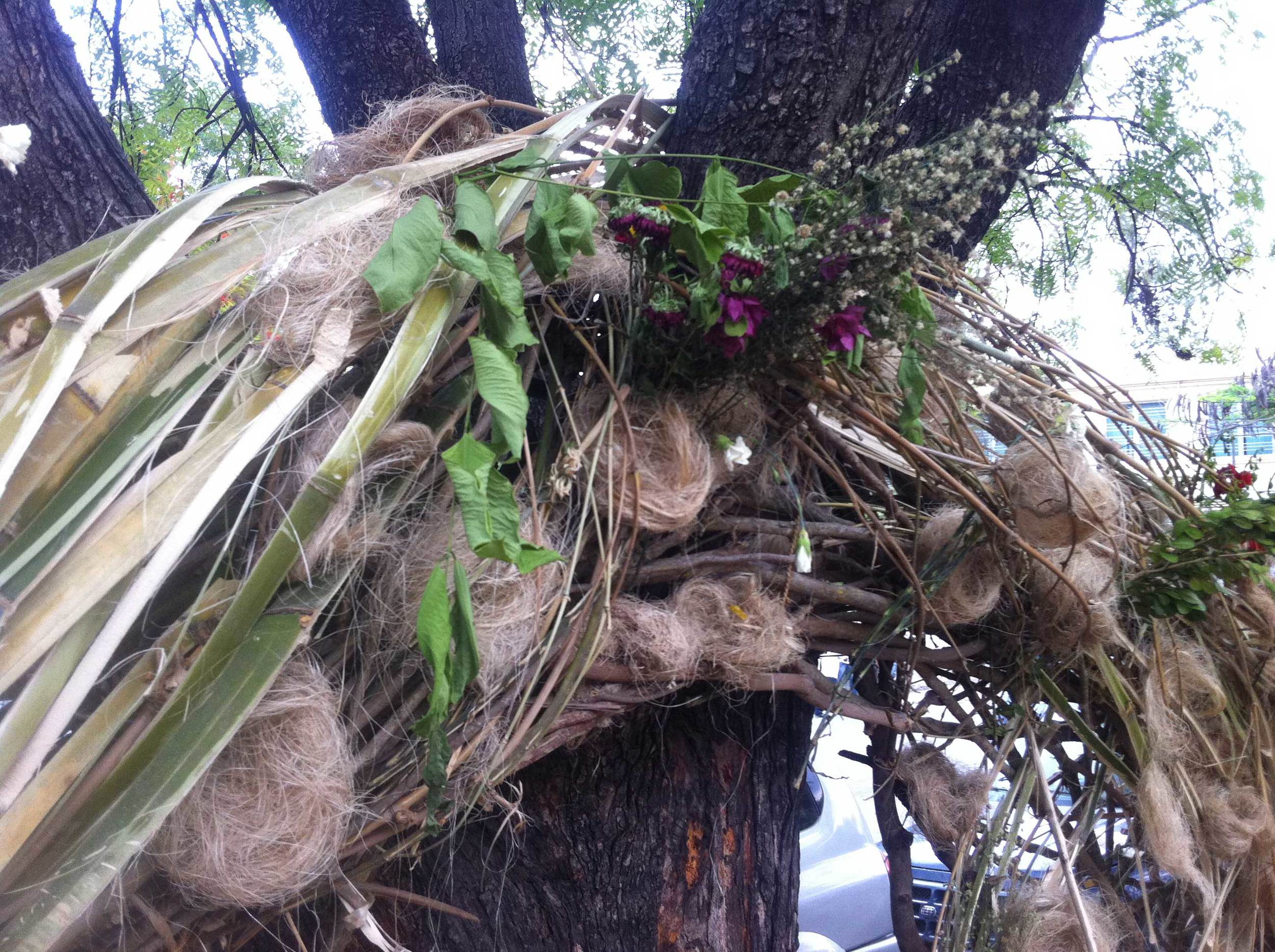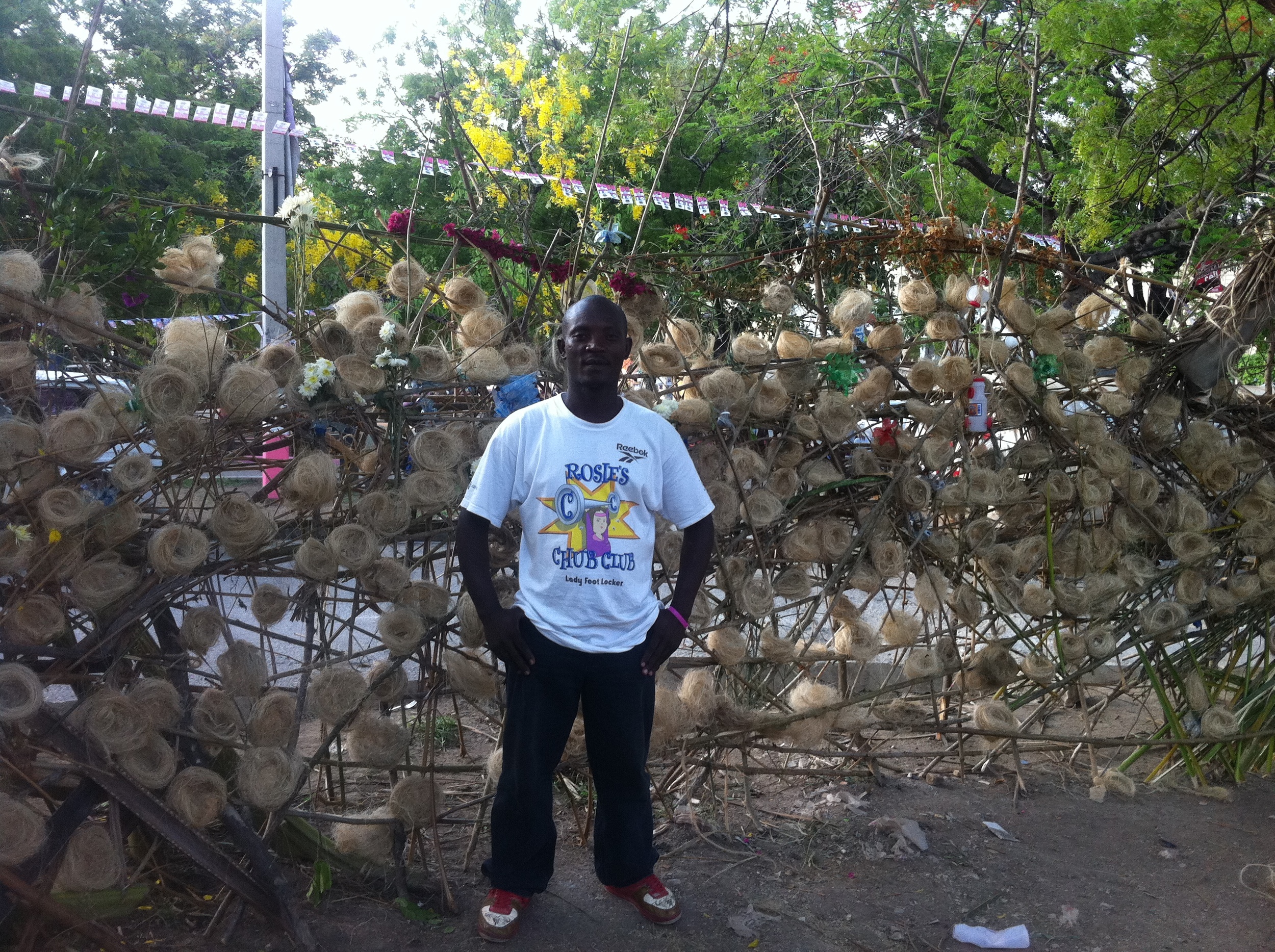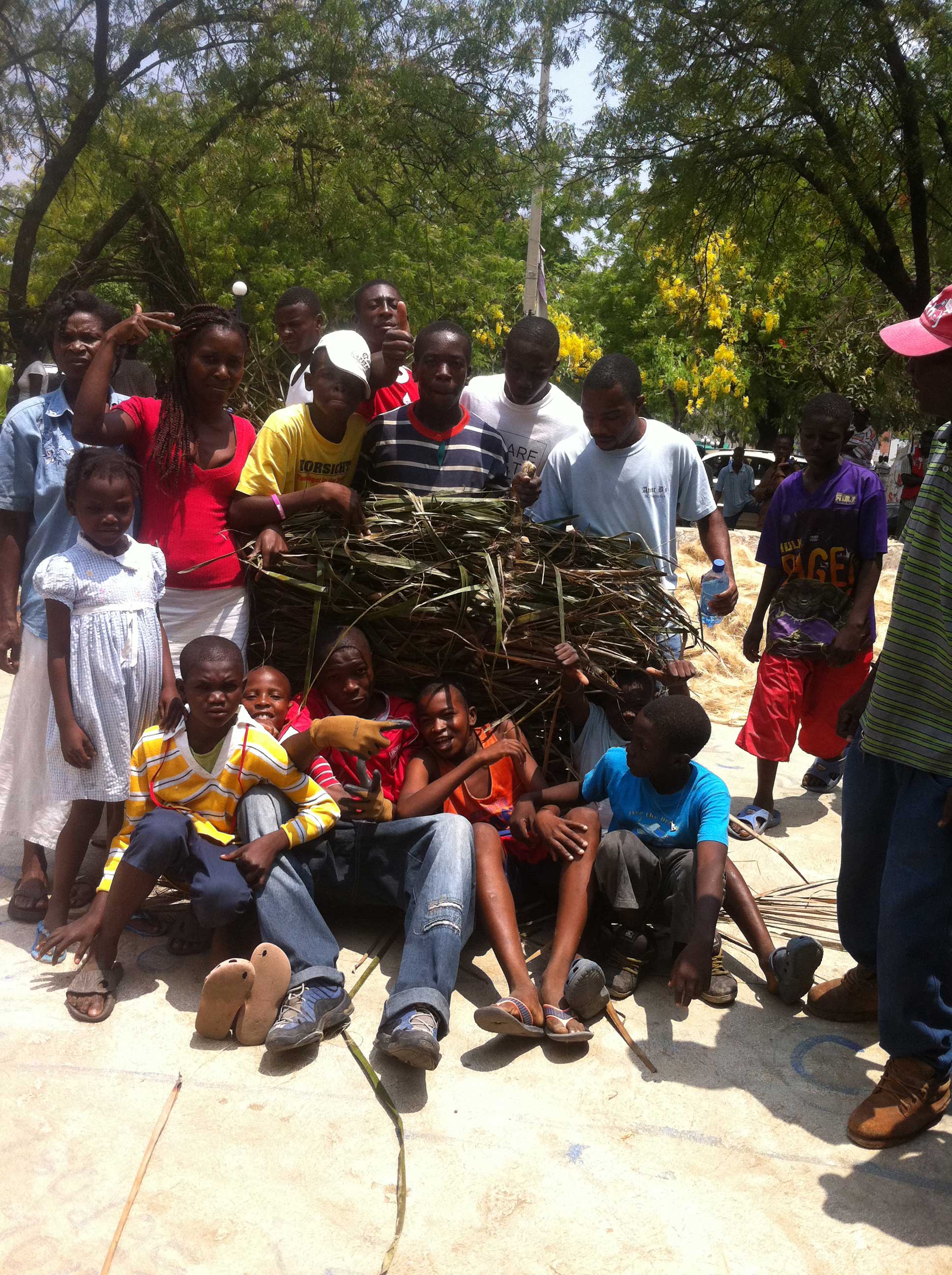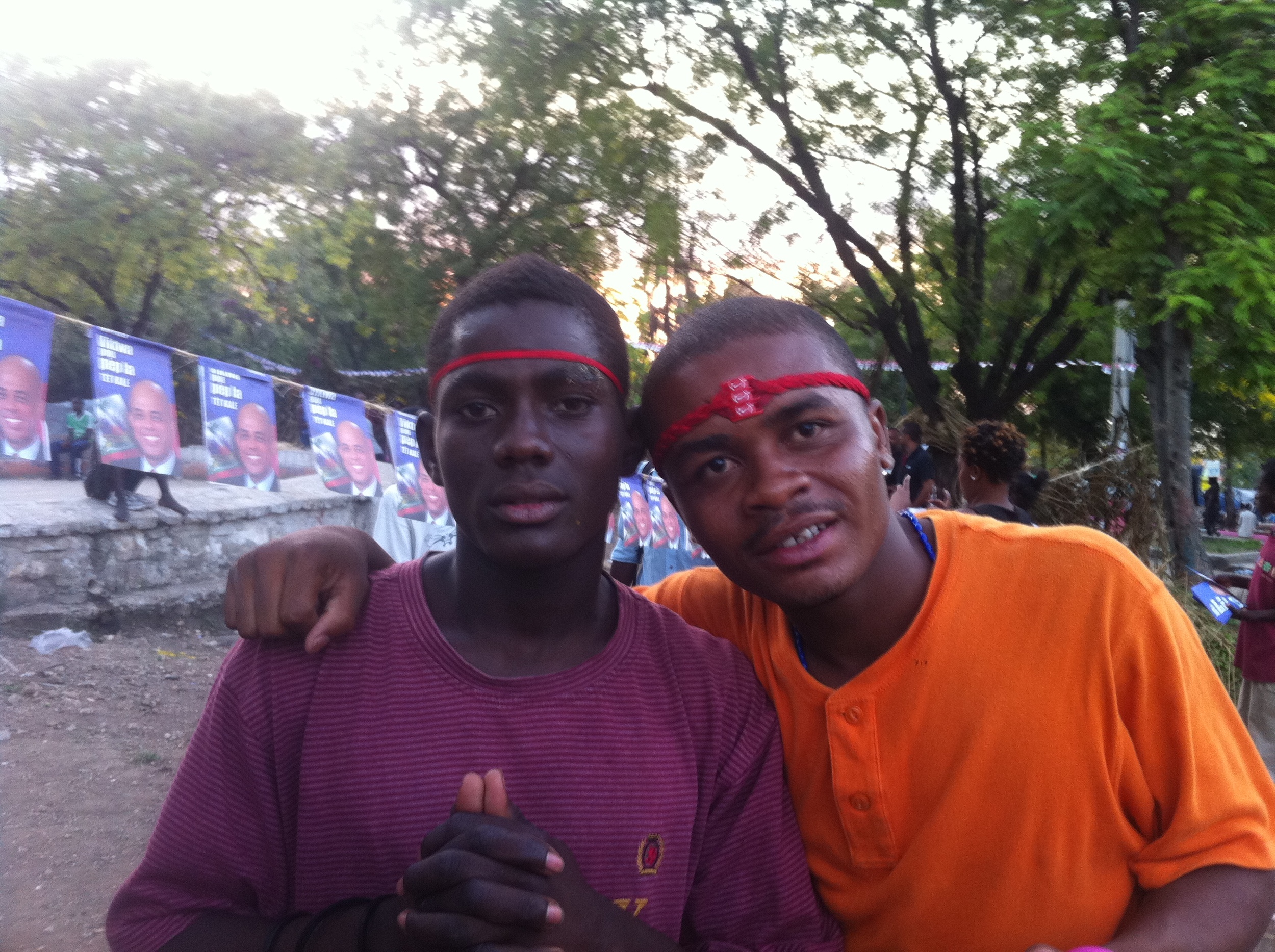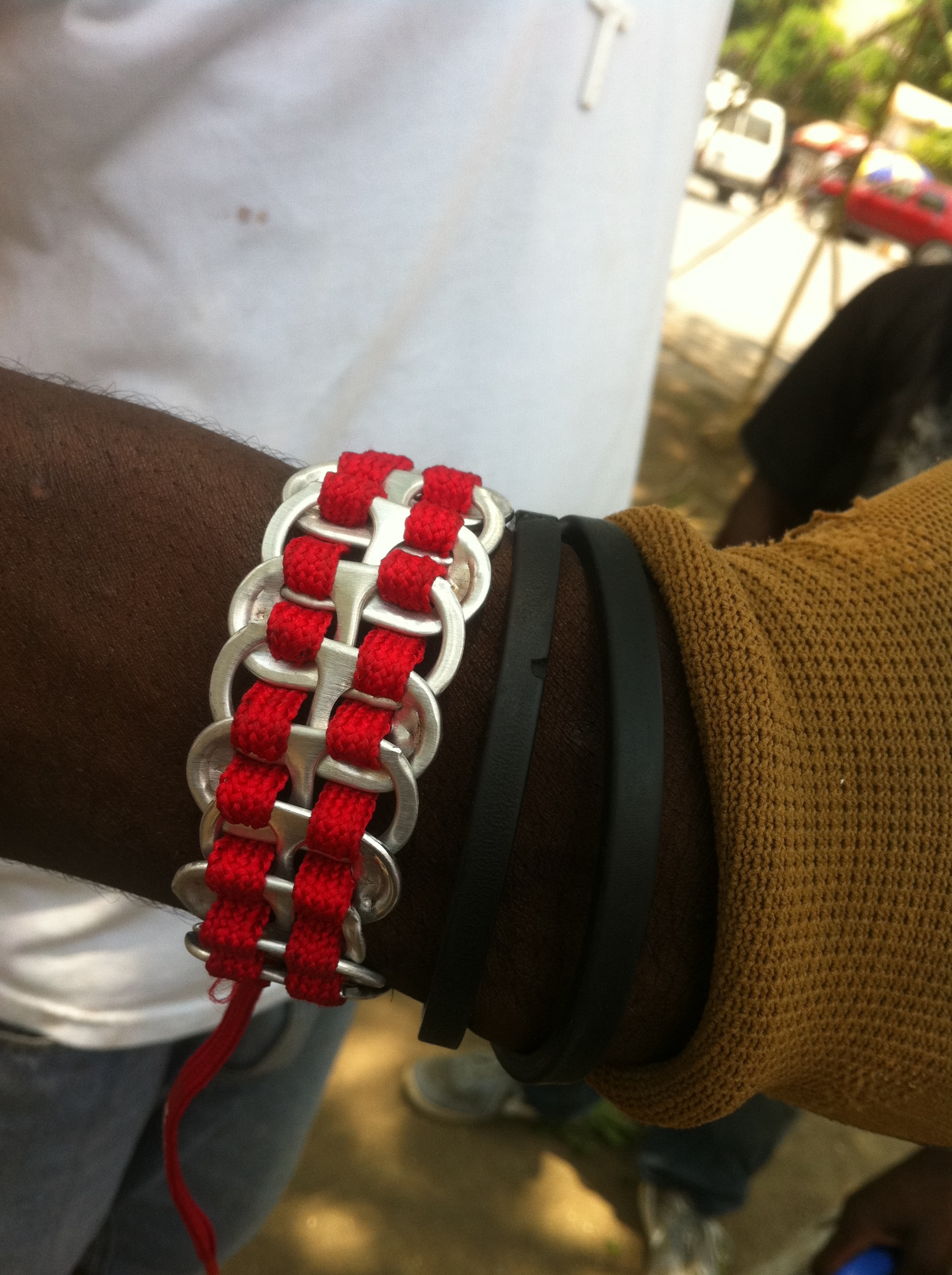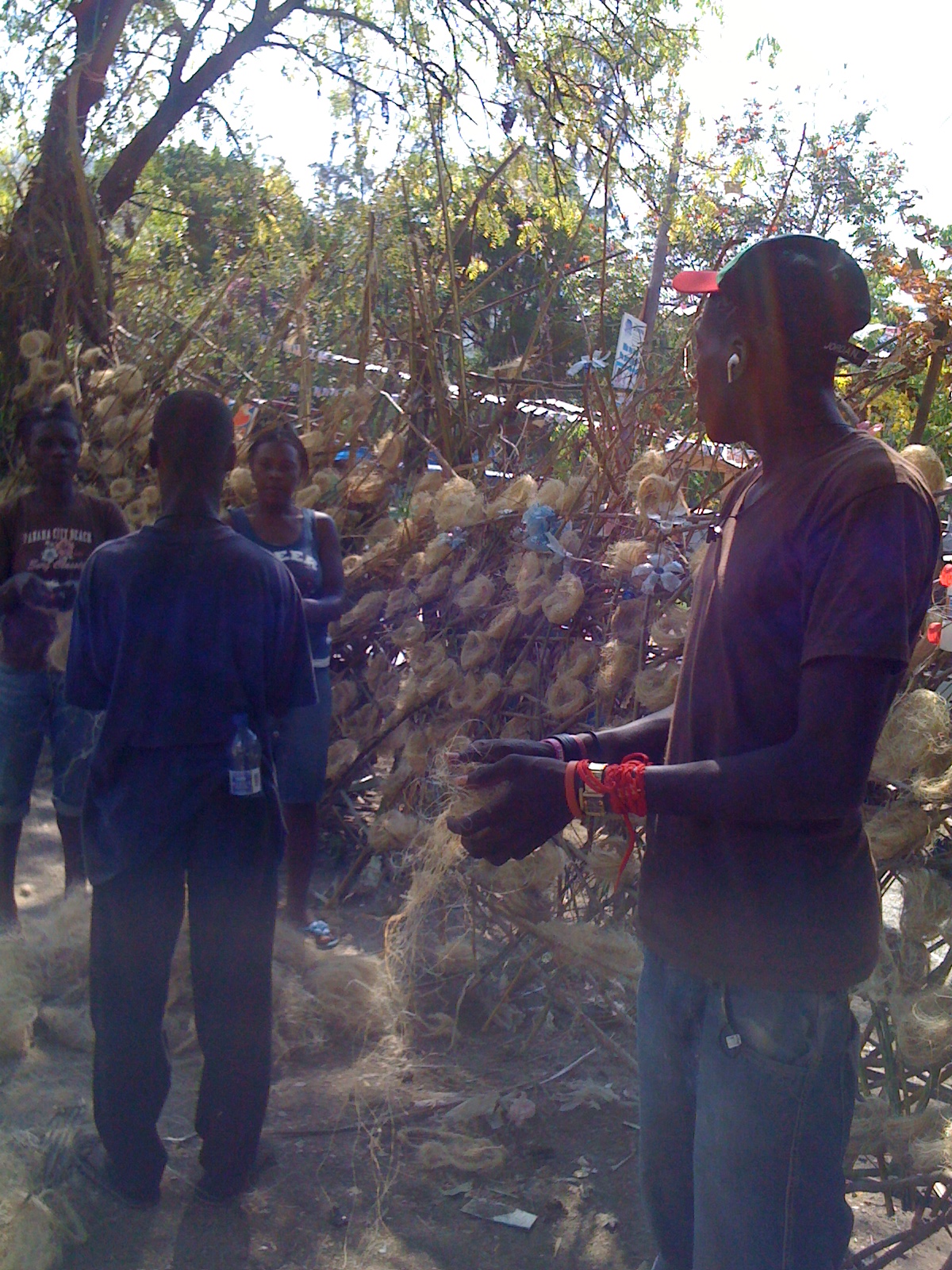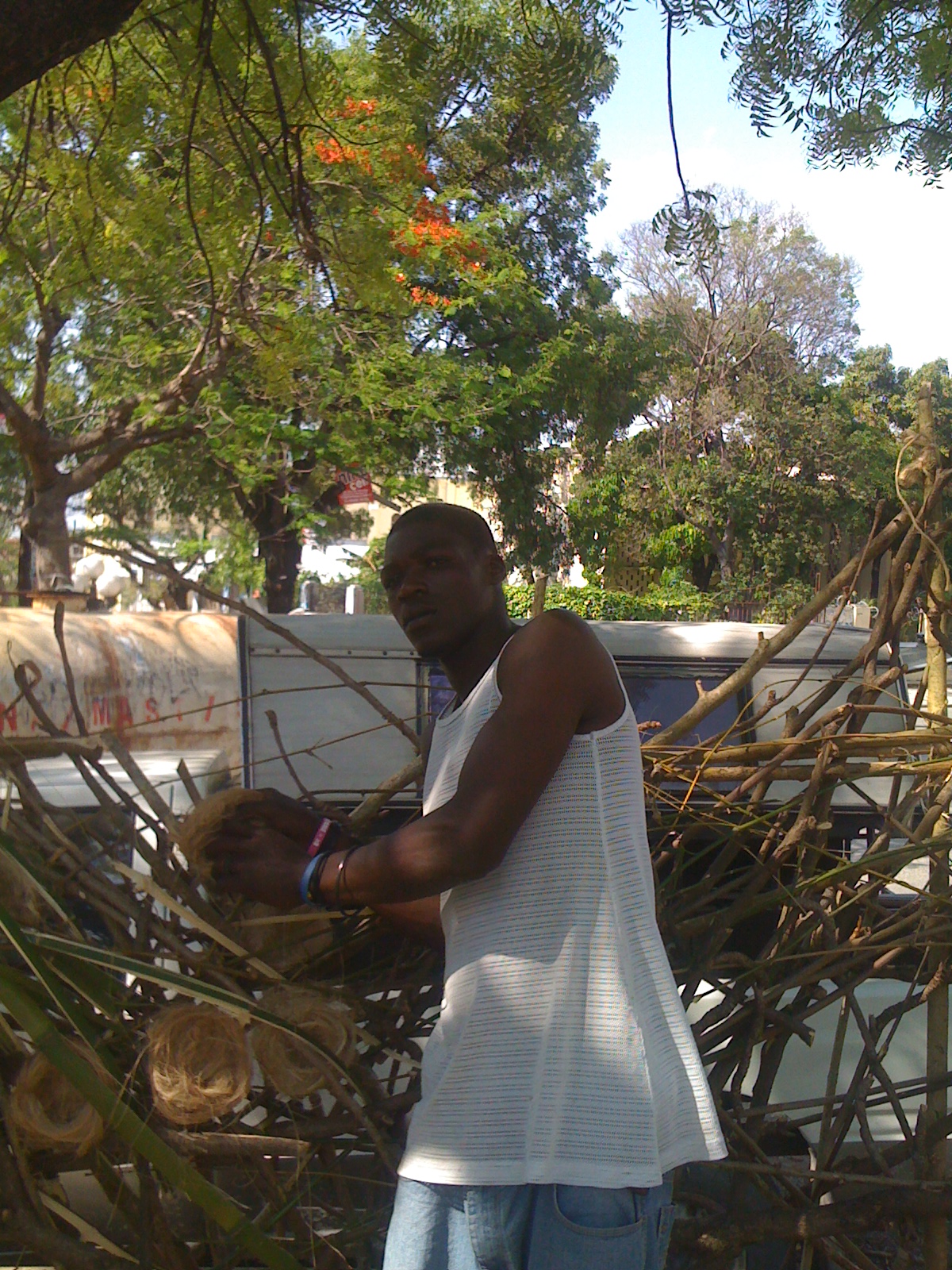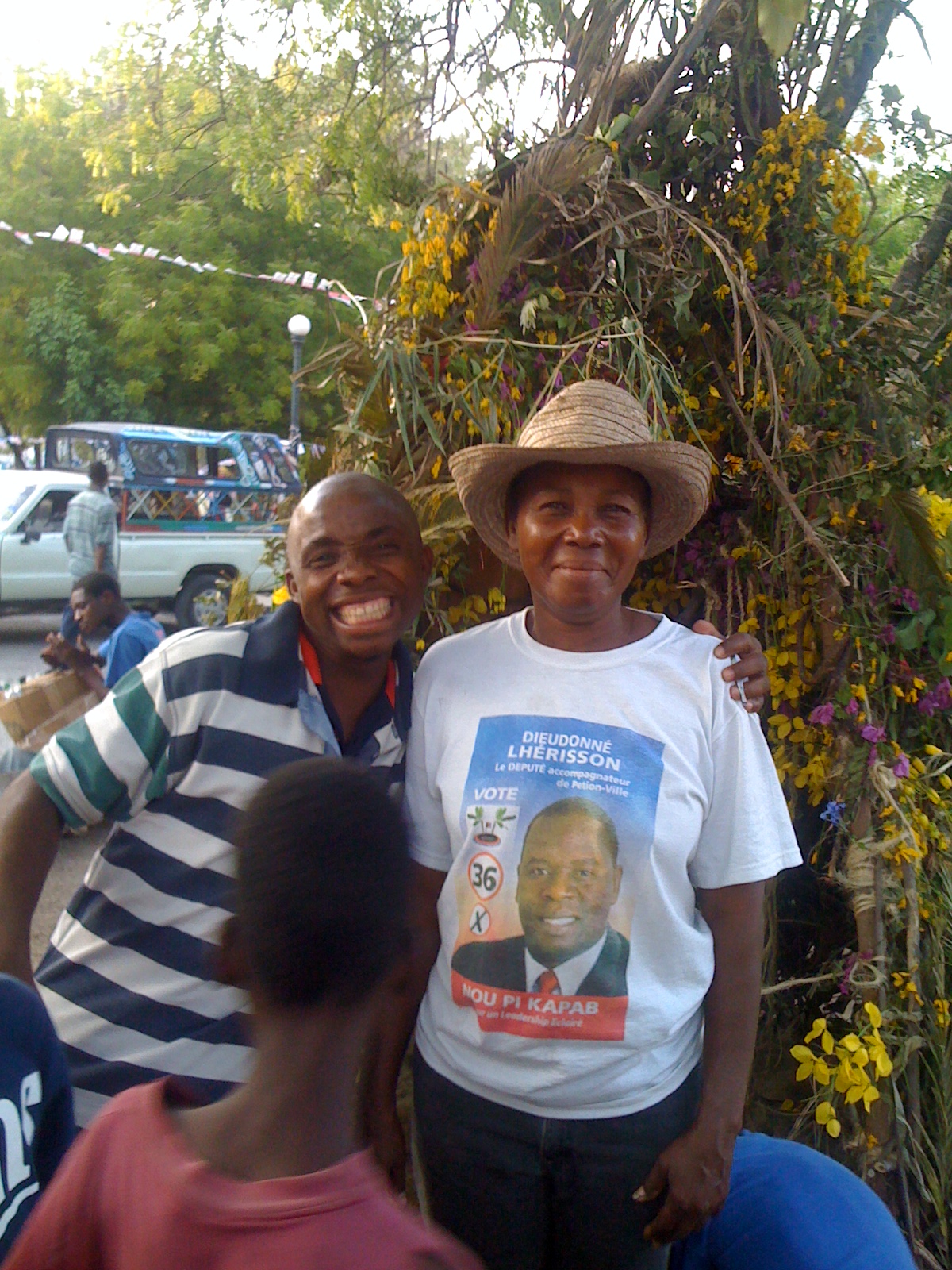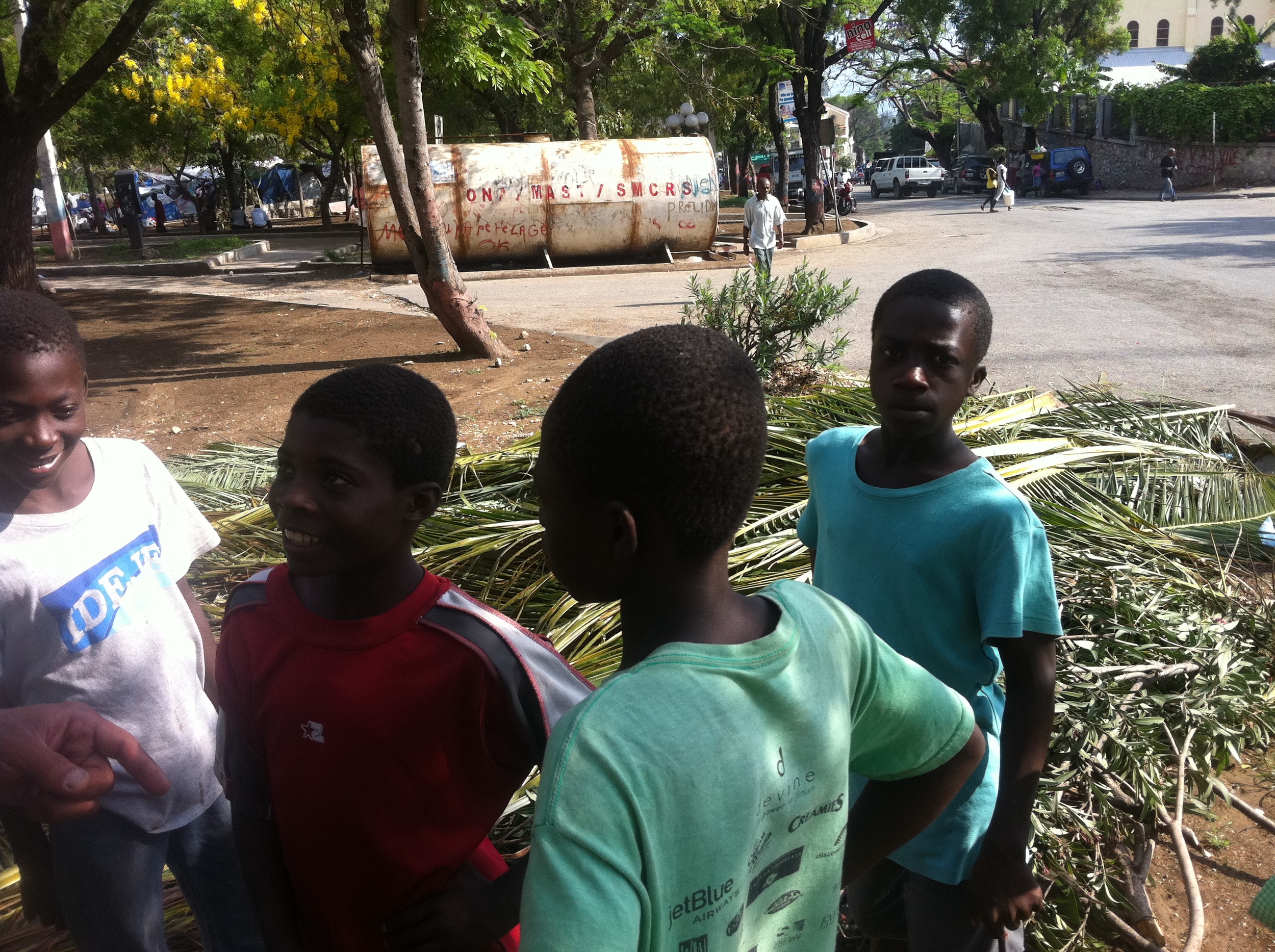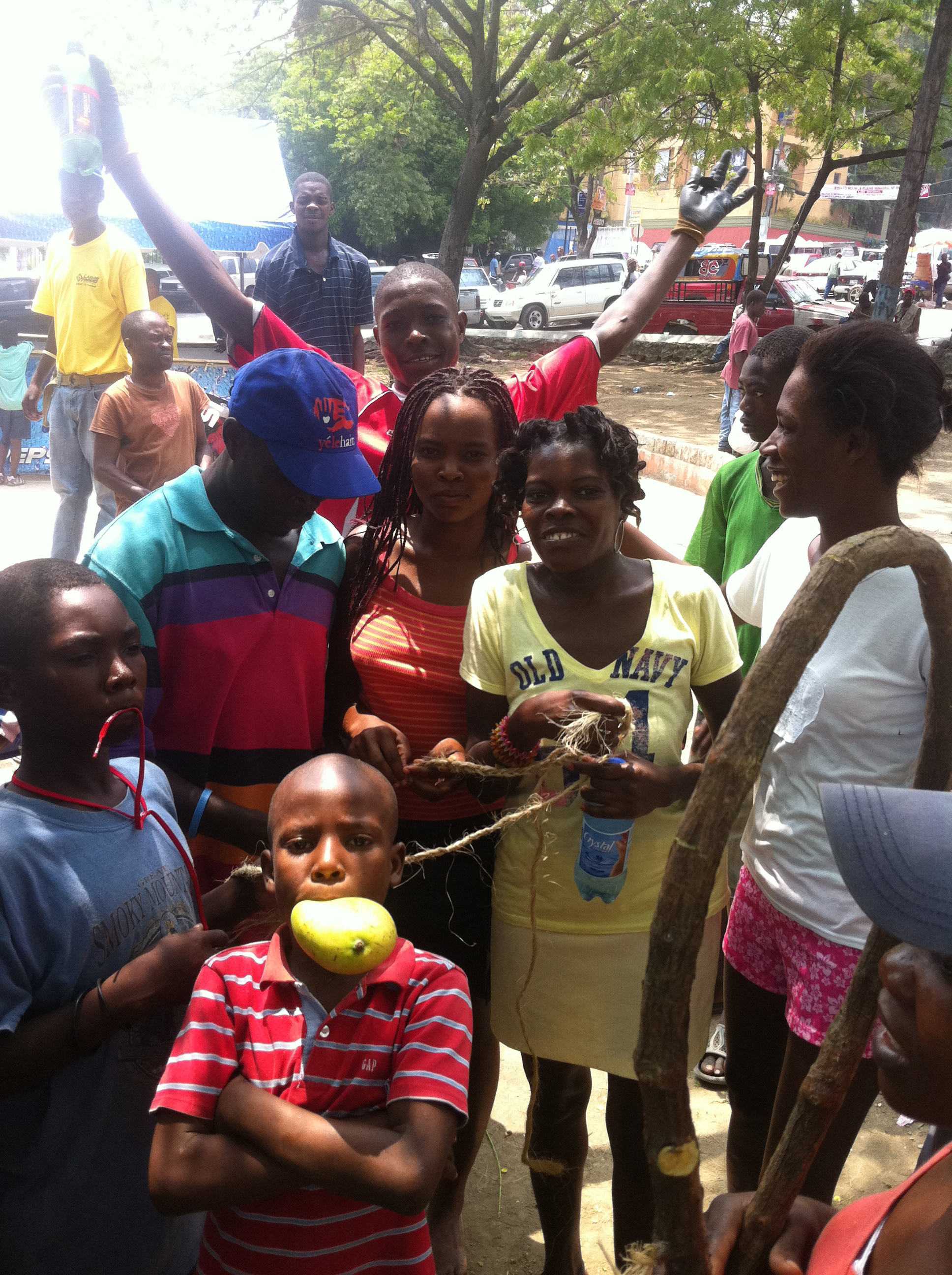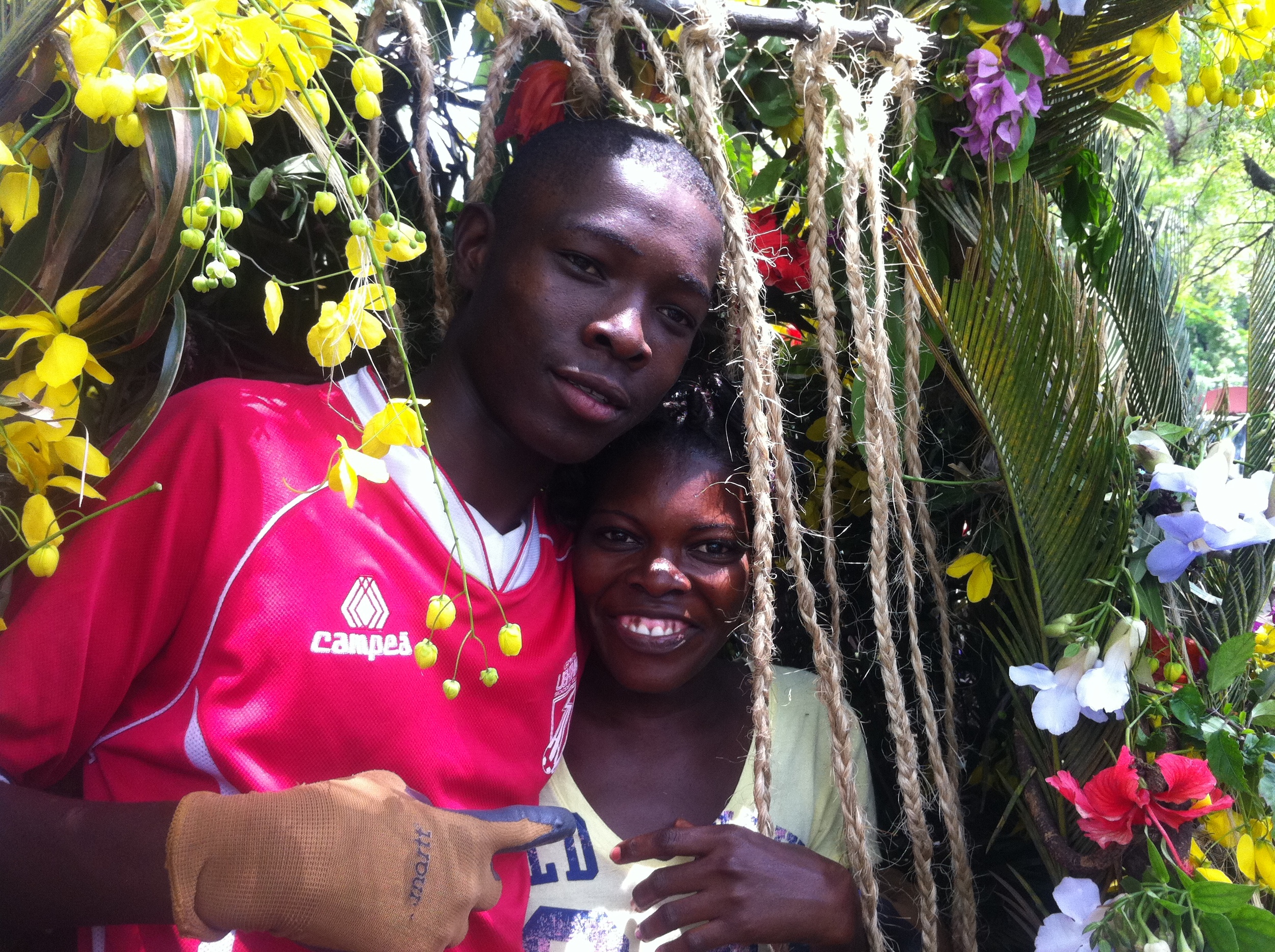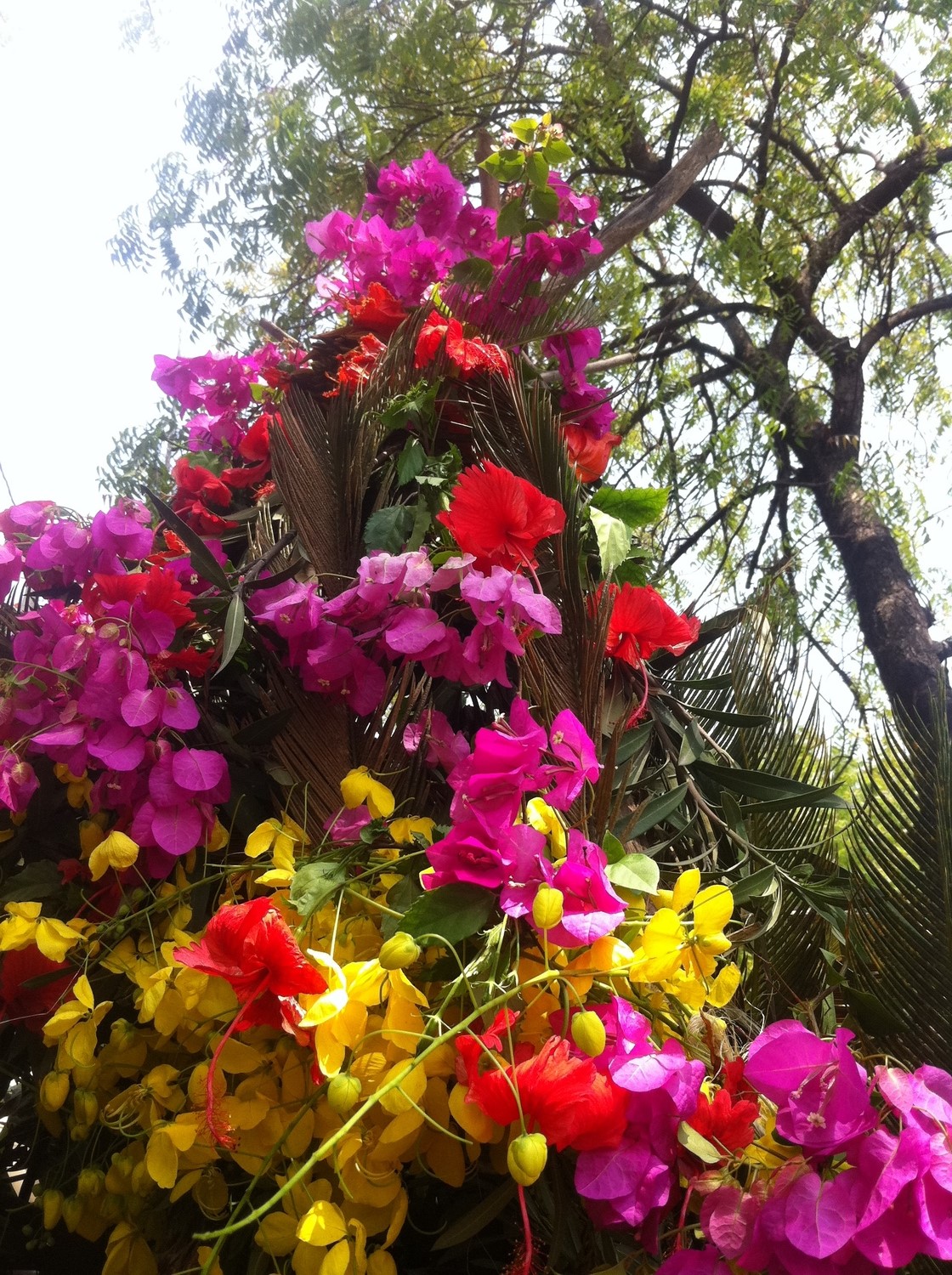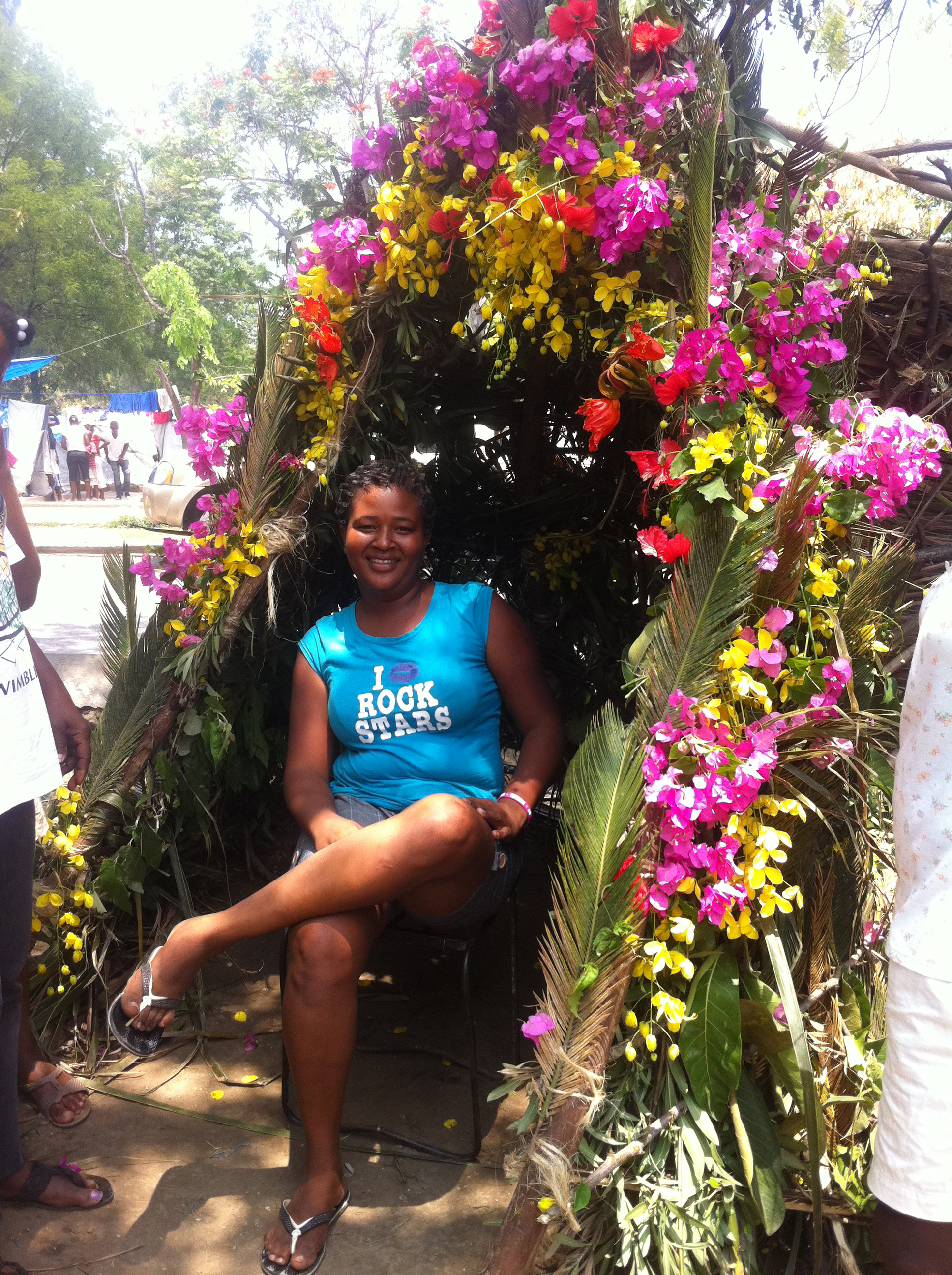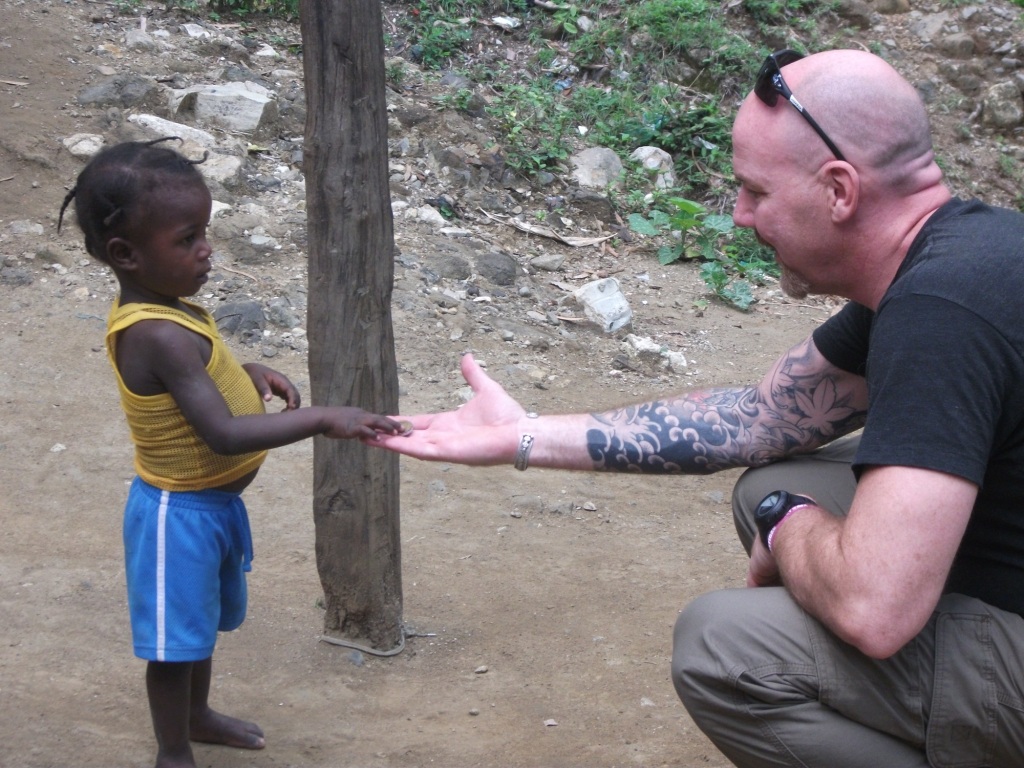05.2011
“Aiti Sonje (Haiti Remembers")” a memorial sculpture to those perished in the earthquake of 2010, Port au Prince, Haiti
The devastating 7.0M earthquake of 2010 just 16 miles west of the Haitian capital city of Port Au Prince caused massive damage in the poorest of nations. This led to unfathomable suffering, outbreaks of cholera and a rapid increase in the percentage of AIDS cases in the area. Up to 316,000 souls perished from the quake and its aftermath.
A year later, having just sold my design firm Intelligent Design in Portland, OR and desiring greater challenges with deeper meaning, I approached the Nike/RED team to sponsor a memorial sculpture to be built by the survivors, for the survivors, in the heart of Port Au Prince. I would use only locally found no-cost materials pulled from the rubble and from the mountain-side trees killed by the quake. I assembled a team of sponsors led by Nike/RED (RED is the Bono/U2 inspired global AIDS awareness effort) along with my own funding. I was introduced to project manager, Creole speaker and son of Haiti JP Chevalier through Nike. JP and his family, specifically his brother Regi, in Haiti, were instrumental in orchestrating the efforts on the ground from knowing who to call for permits, who to call for TV and radio promotions, who to avoid and who to “donate” to. The UN had a force of 29 Nepalese troops on the memorial build site for the two weeks to “prevent riots”, M16s at the ready.
I arrived with no design rather trusting that the energy and meaning of the project would guide, and it did. Over the two week event we obtained permission to build around an old unused fountain in the city’s central park, enlisted the help of over 1,200 volunteers most of whom were living under blue tarps in the streets as their homes were flattened, caused national attention on the memorial and created a work of art which had people congregating 24 hours a day to pay respects to the dead. We had encouragement and visits from local dignitaries, businesses leaders and even the then president-elect Michel Martelly or Tete-Kale as he was known. The Mayor of the City and news teams visited daily.
The greatest reward came after about five days of designing, coordinating supply of building materials, labor allocation and building: the volunteers took over the memorial and made it their own. The simple assemblage techniques of weaving material over and under to create 3D forms was quickly understood and mastered. Volunteers were teaching each other and the walls went up quickly. Soon layer upon layer of material was being woven in making it climbable and sturdy. We set four main entry portals, one at each quadrant of the fountain circle. I built one shrine and within a day five more were made and integrated into the wrapping walls. By weeks end the local women had begun to adorn the structure with flowers and woven flowerettes from sisal and spun “nests” each about six inches across and made to represent a lost loved one. The adornments were all spontaneous actions of art. My team and I had nothing to do with the direction of the memorial after the first few days. We were told that old braiding and weaving patterns were being uncovered, ones long out of use. They were being taught by elders that showed up to see what all the fuss was about. The second week was as much about the community sharing, crying, connecting as it was about further building. Many a friend was made.
The City adopted the memorial and it was named “Aiti Sonje” which means Haiti Remembers. Several years later I’m told that most of the memorial has gone back to the Earth, like those it memorialized. Parts have been taken to homes and to grave sites. I thank and honor all who participated, this project changed my life and helped guide me to the art I now do.

